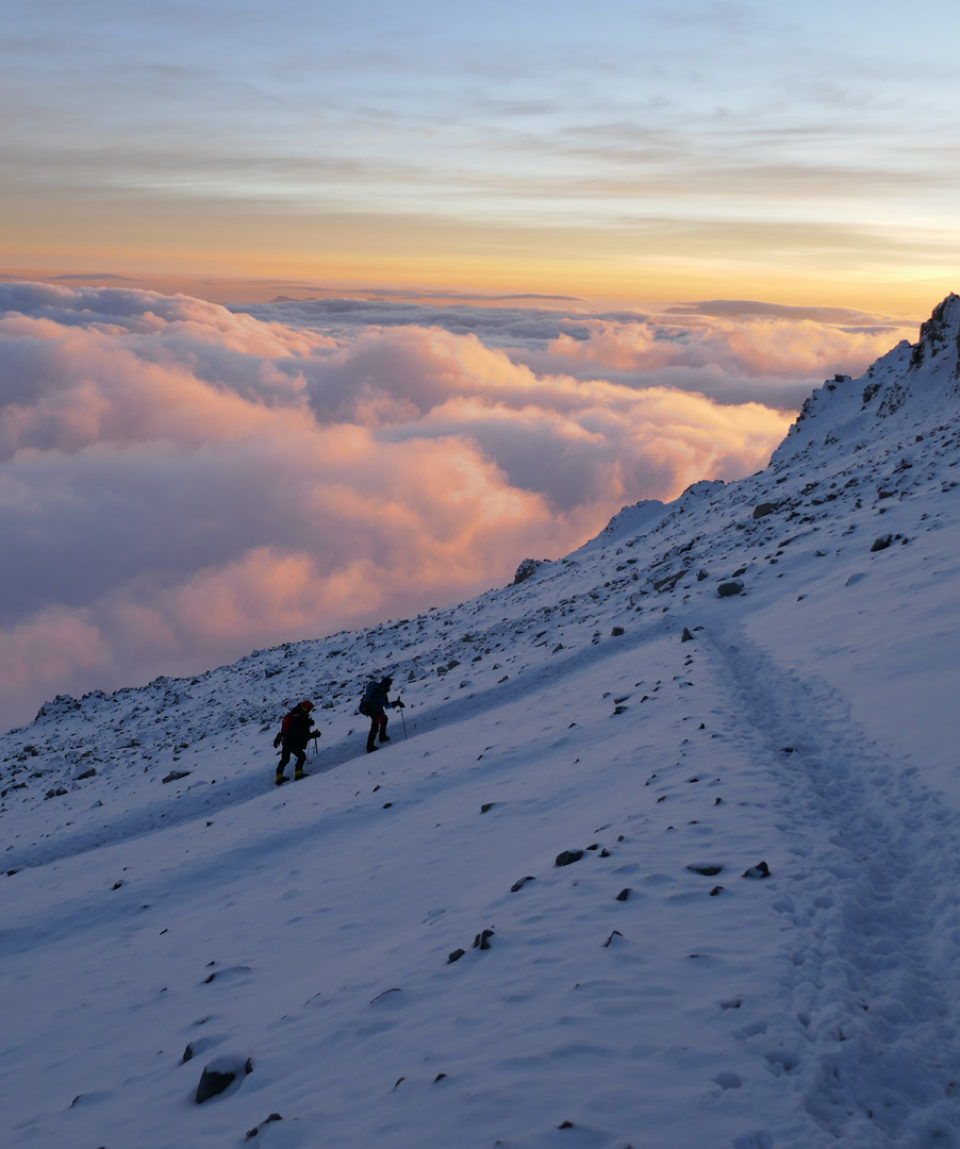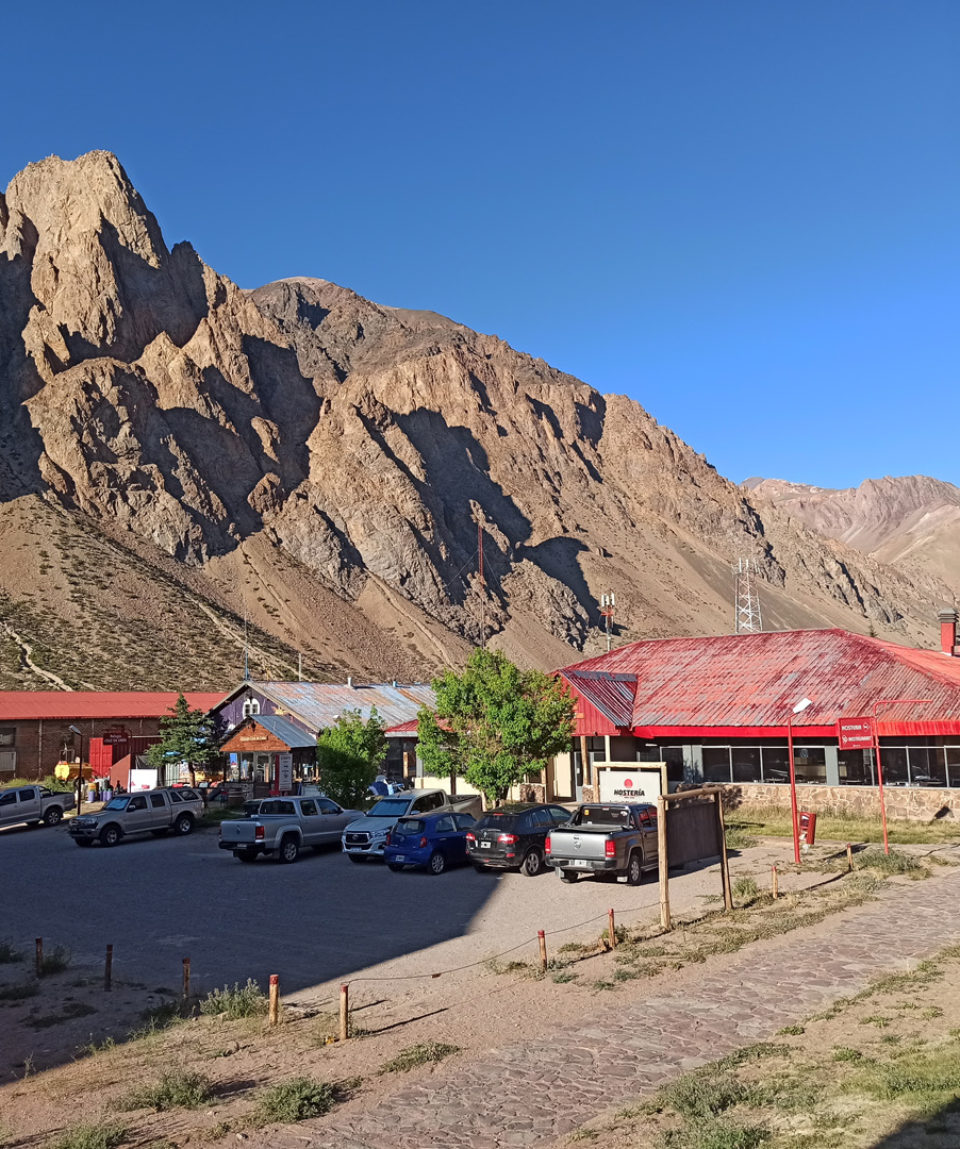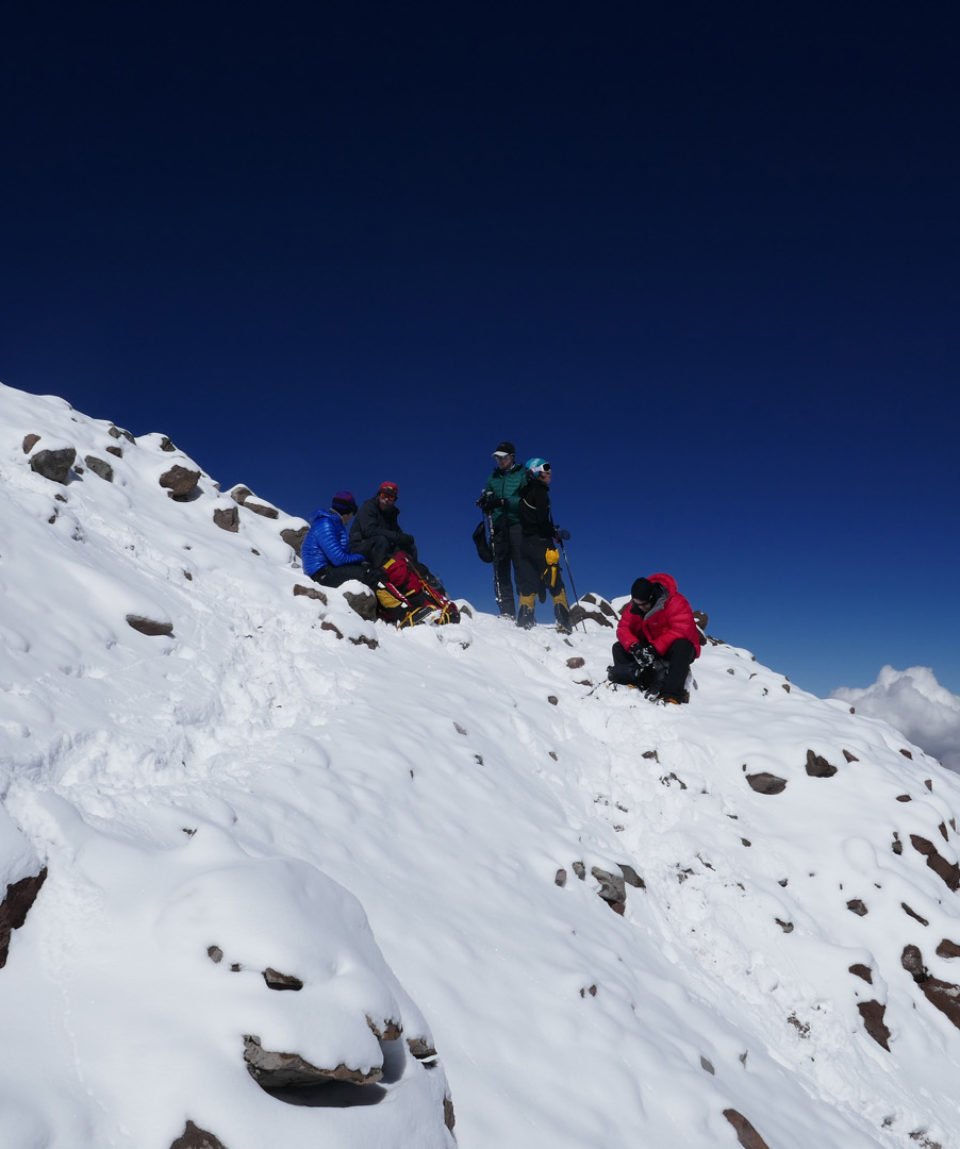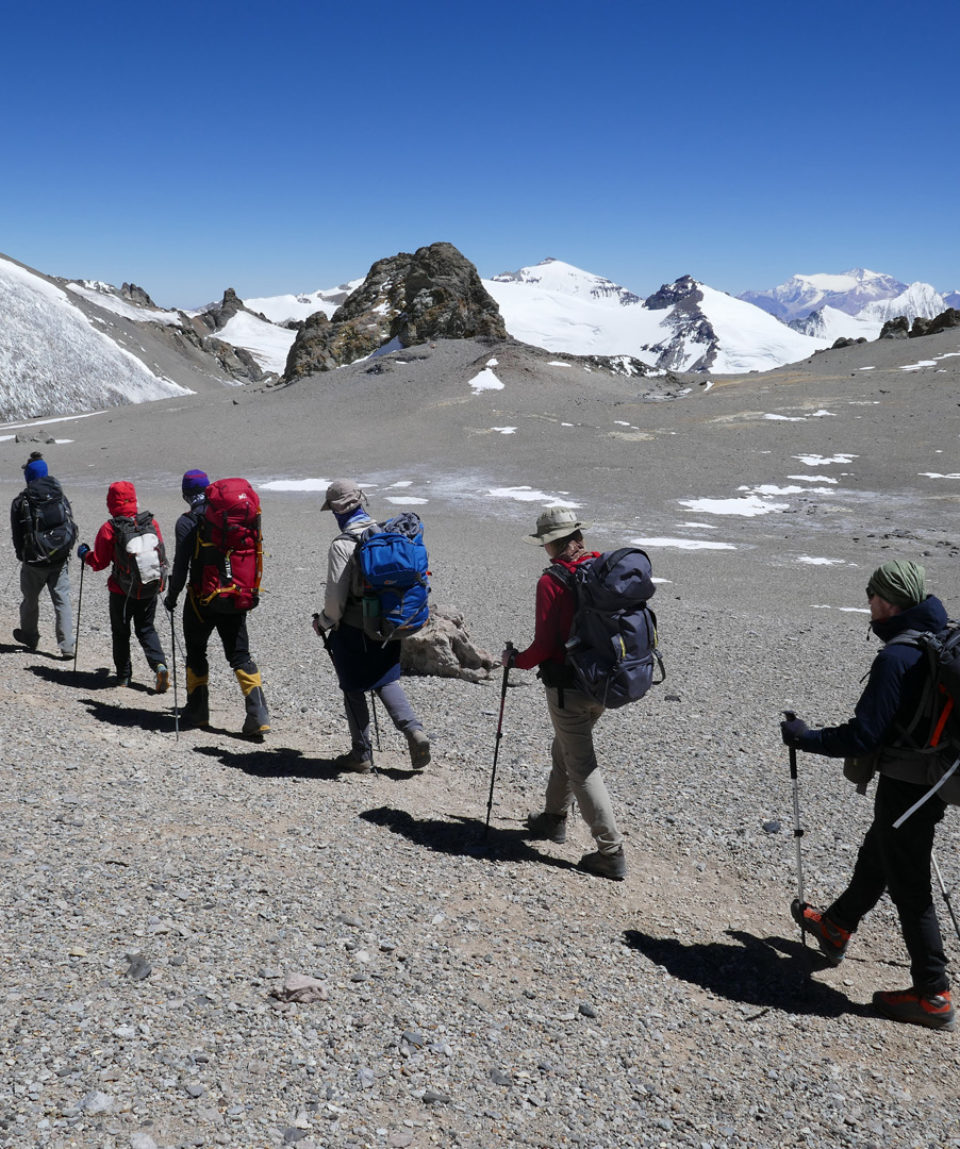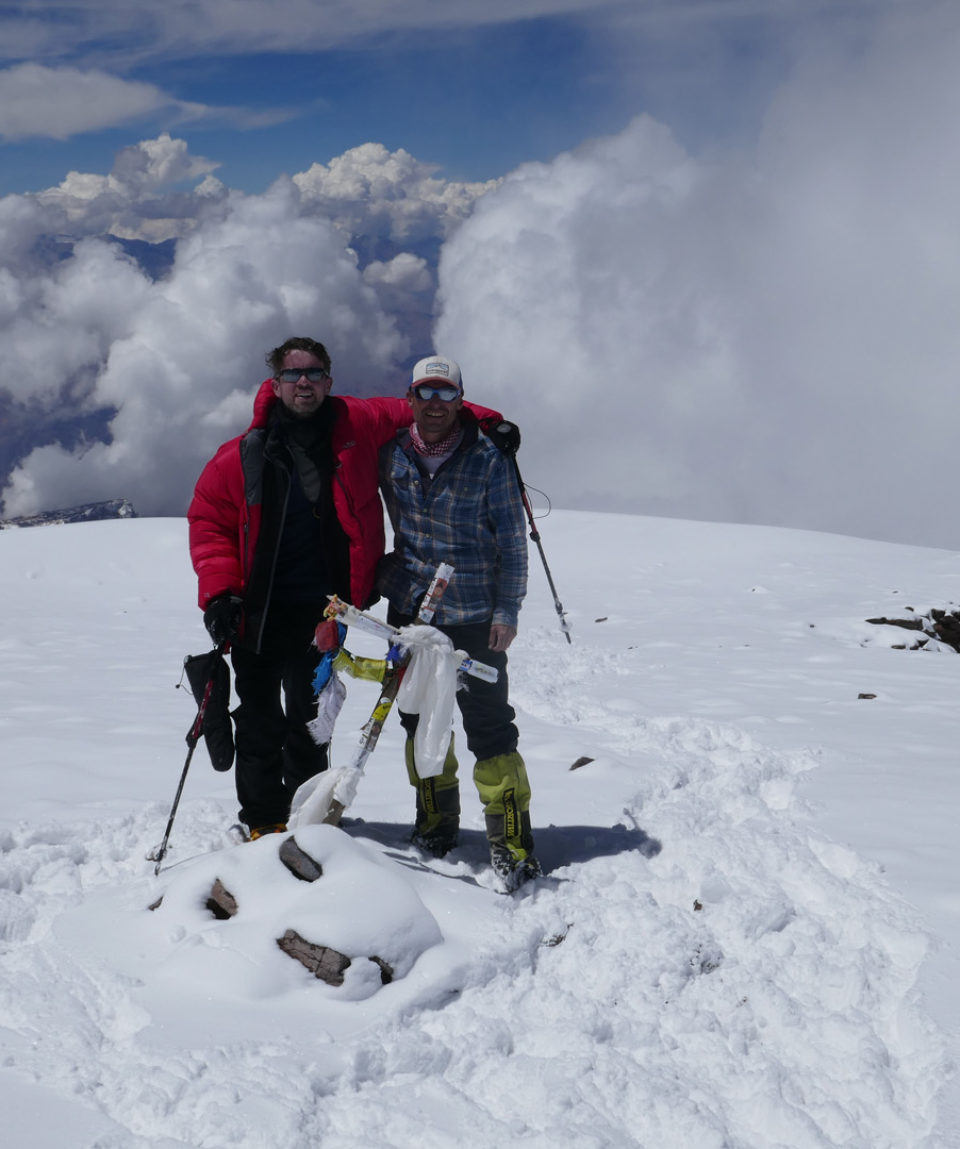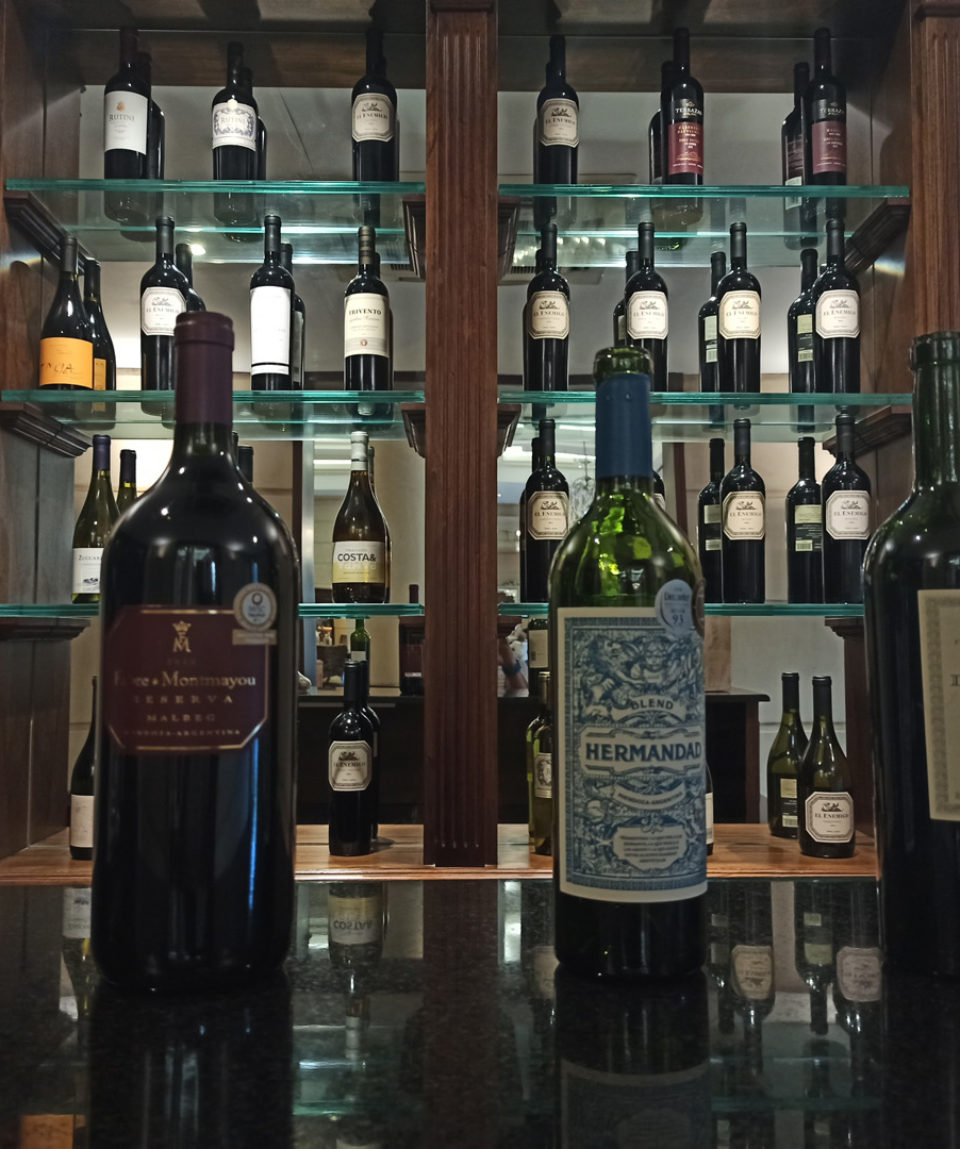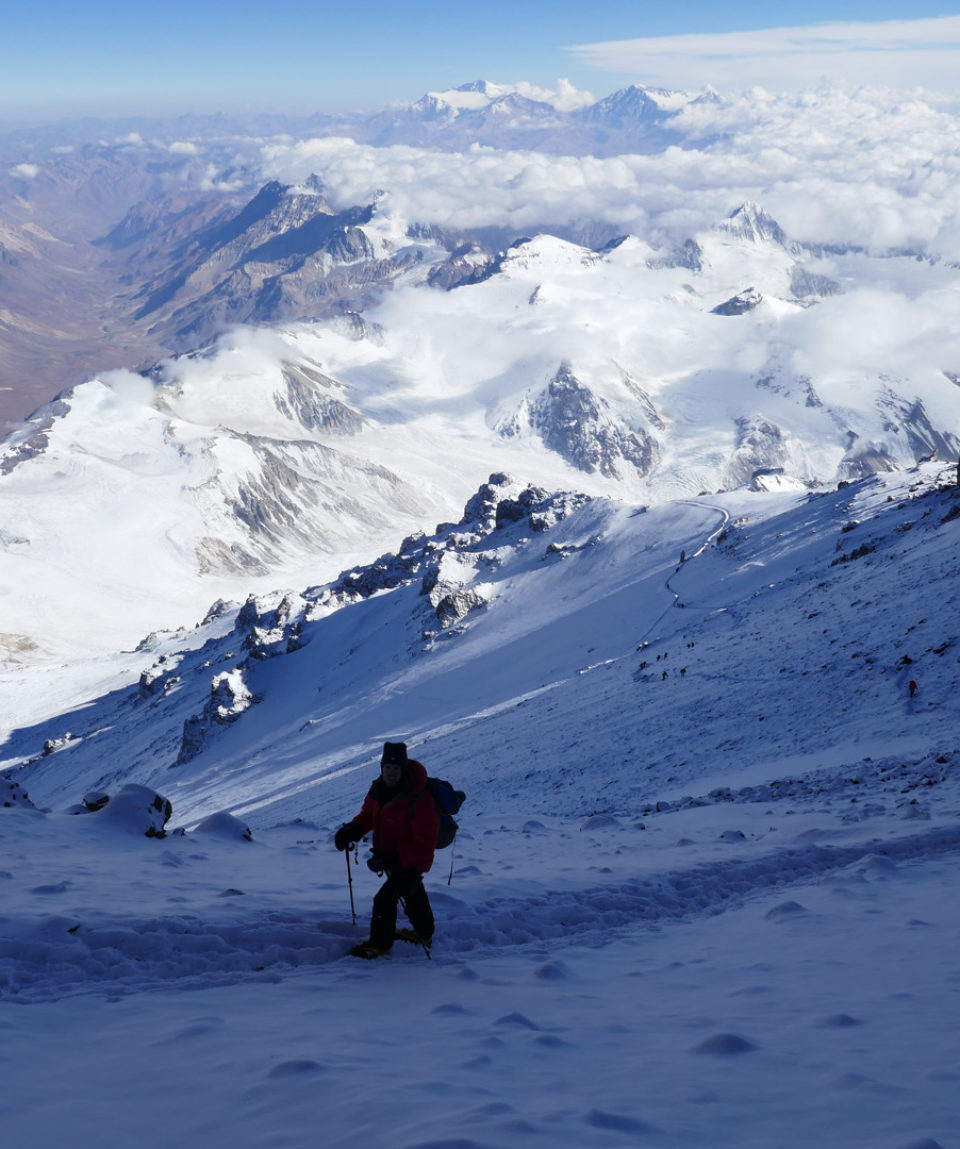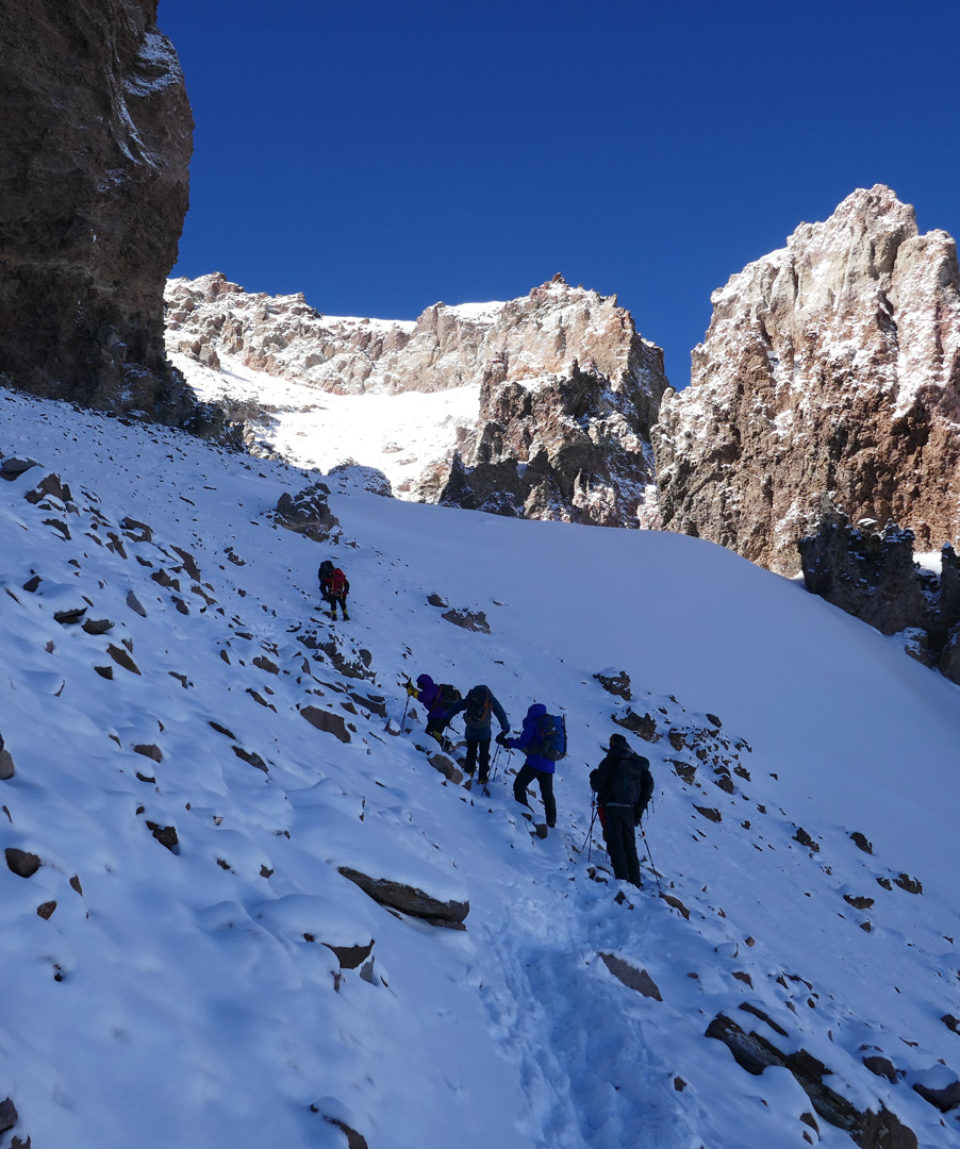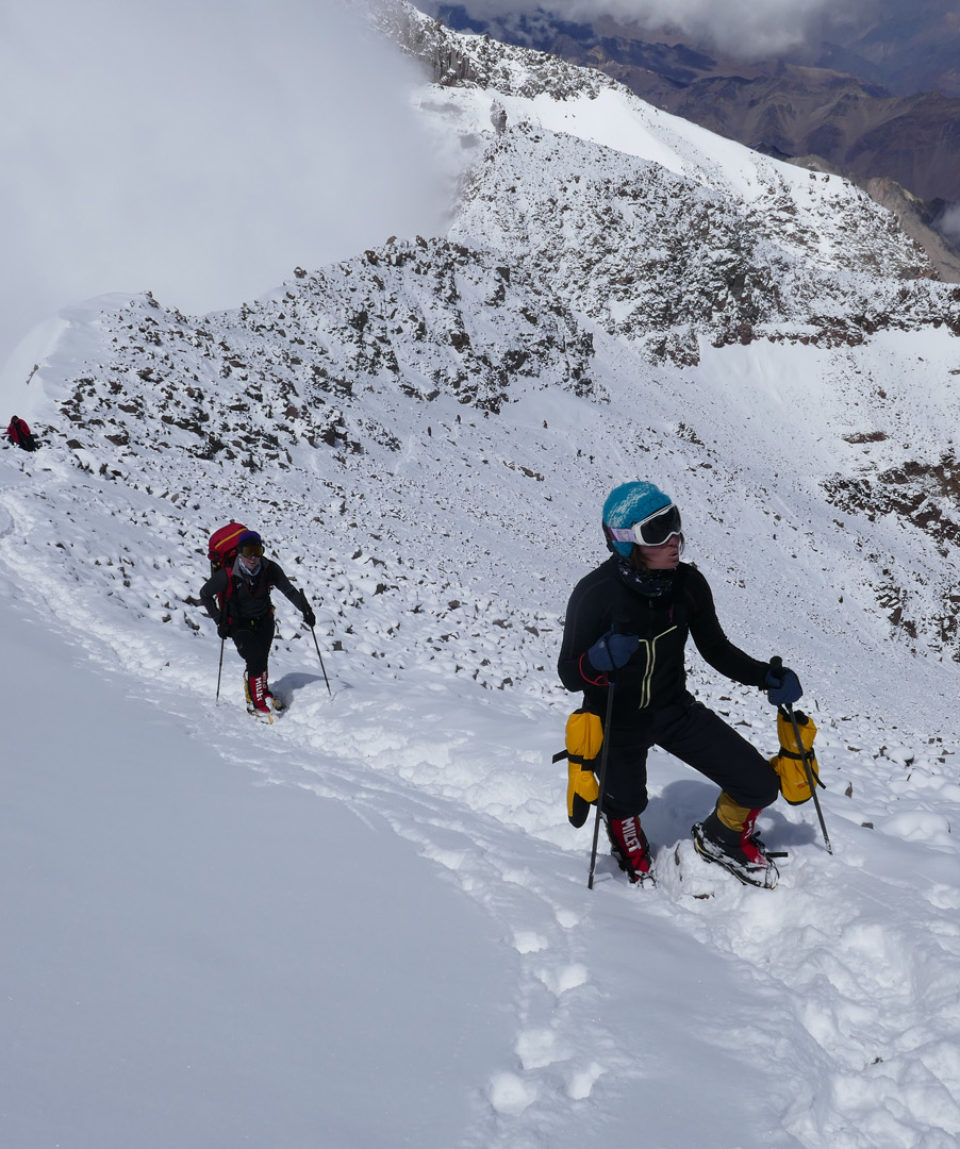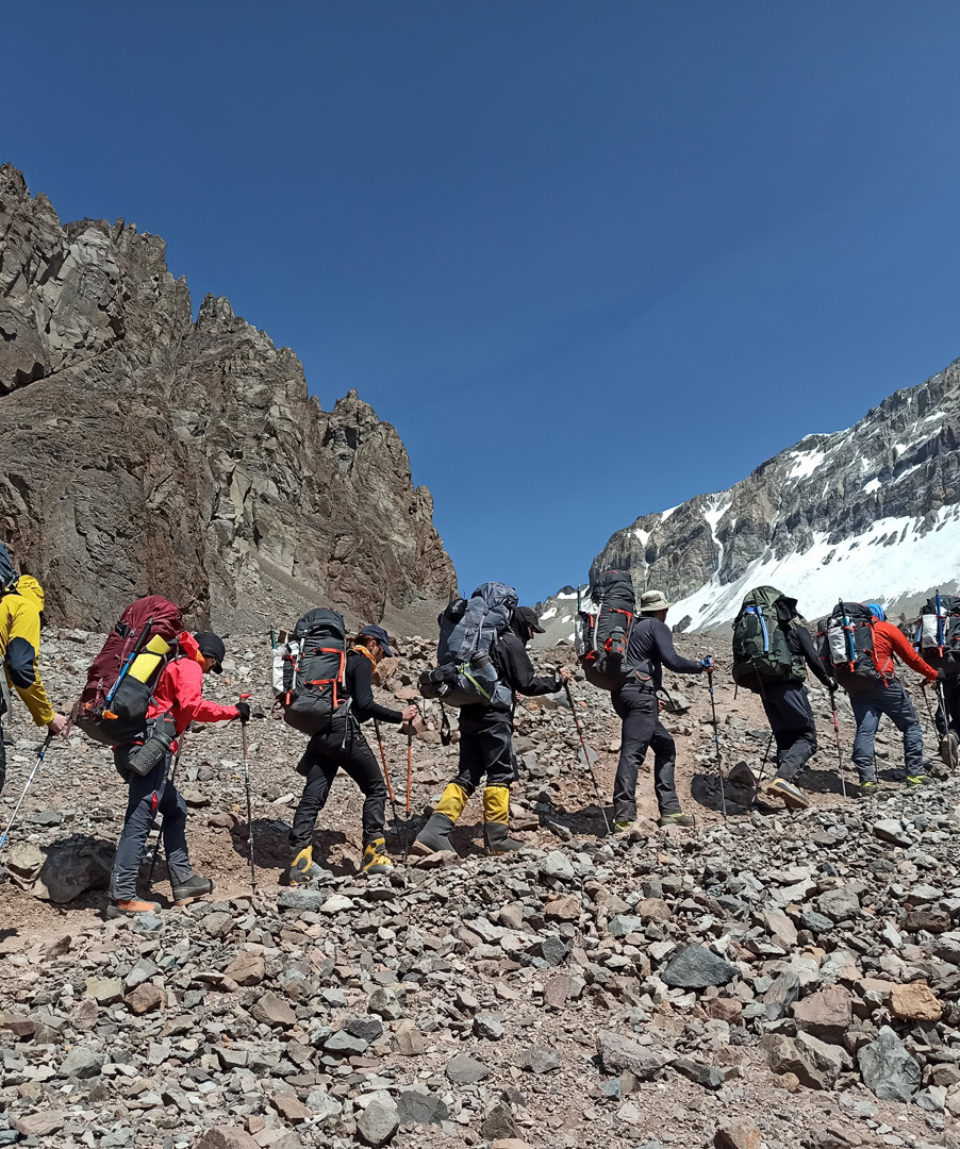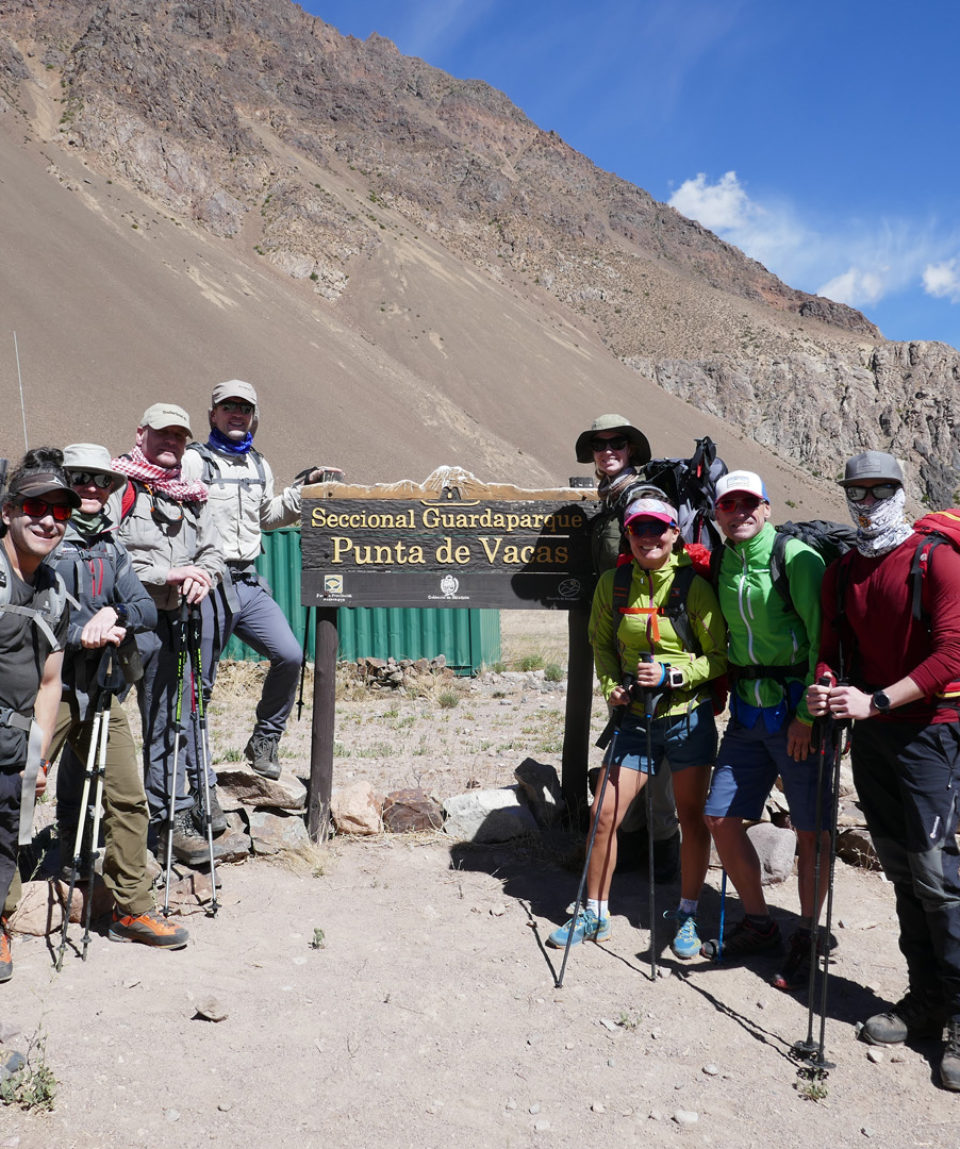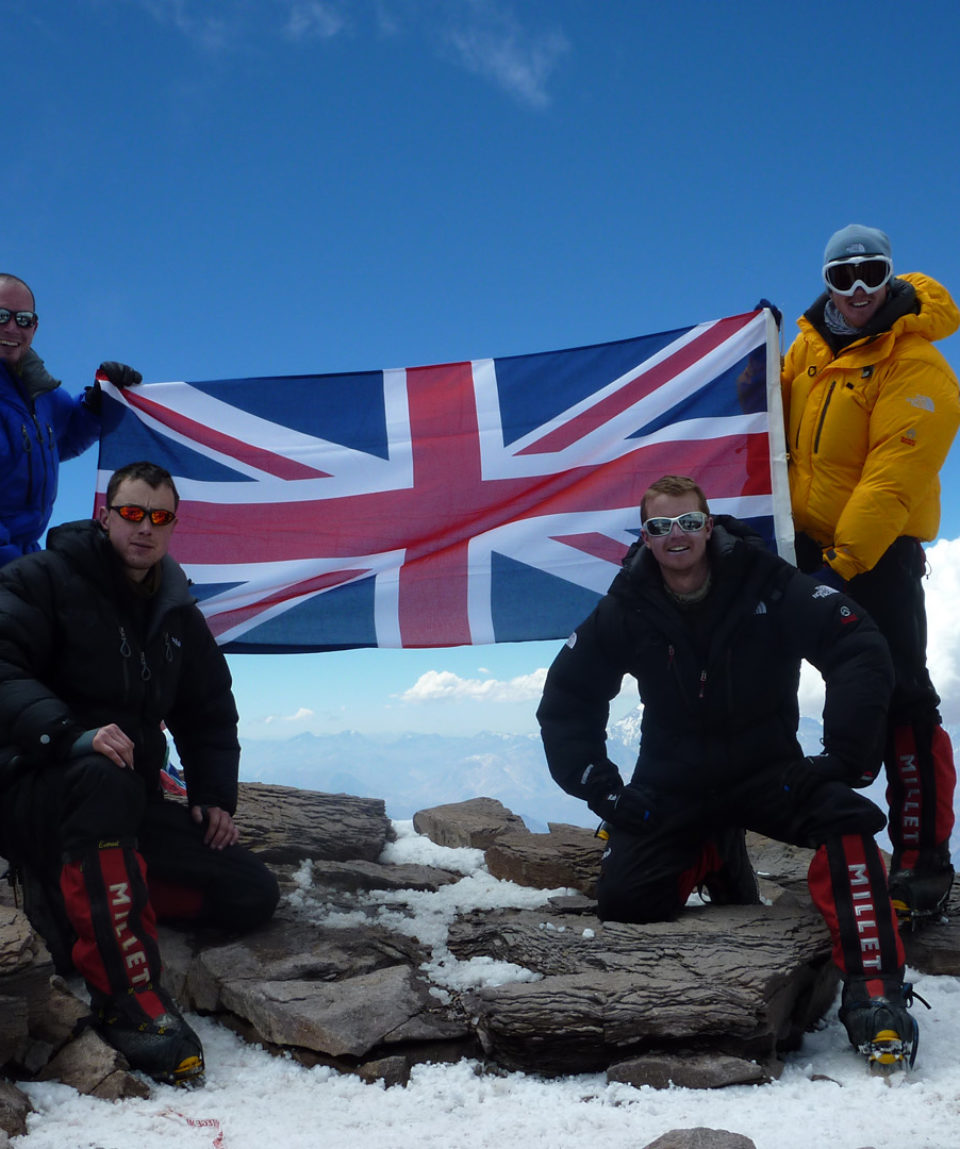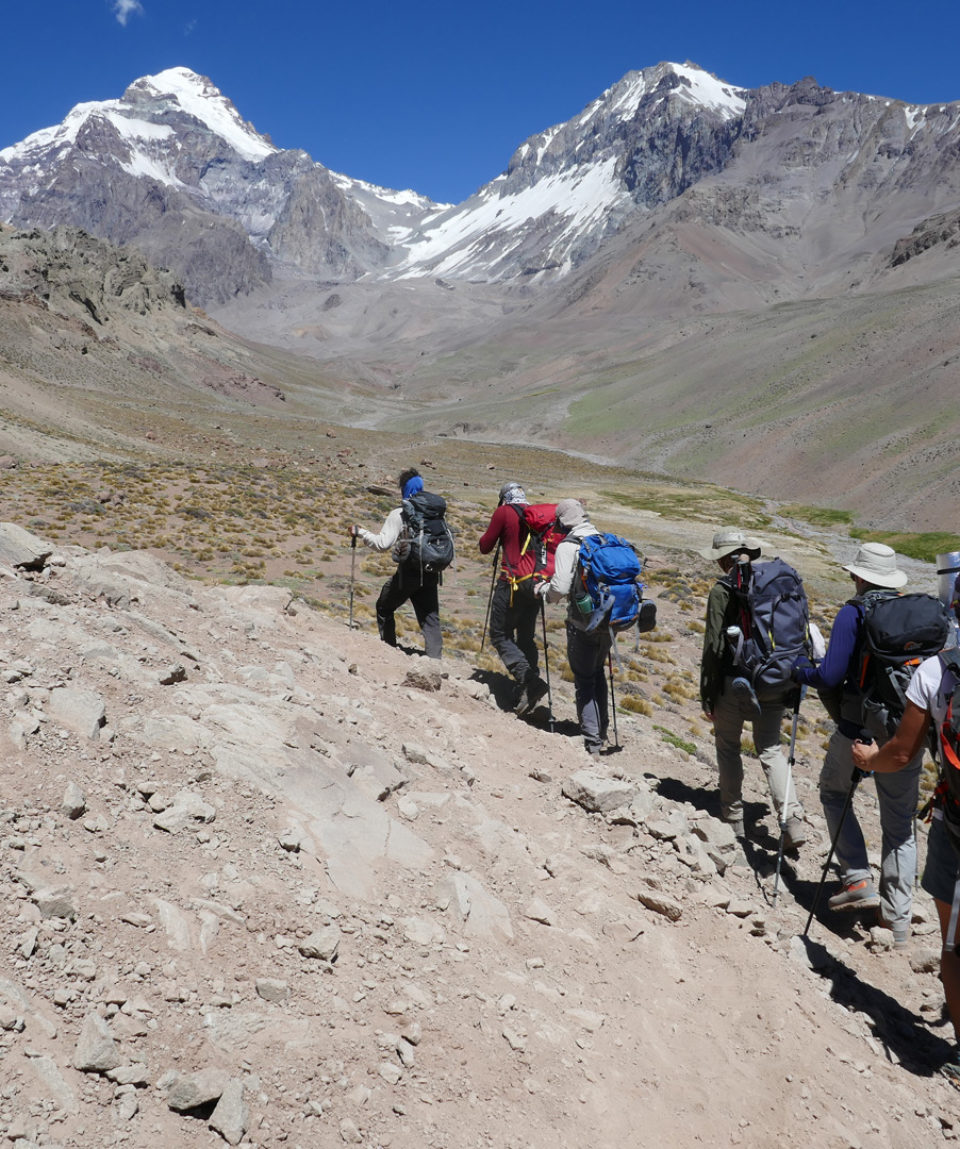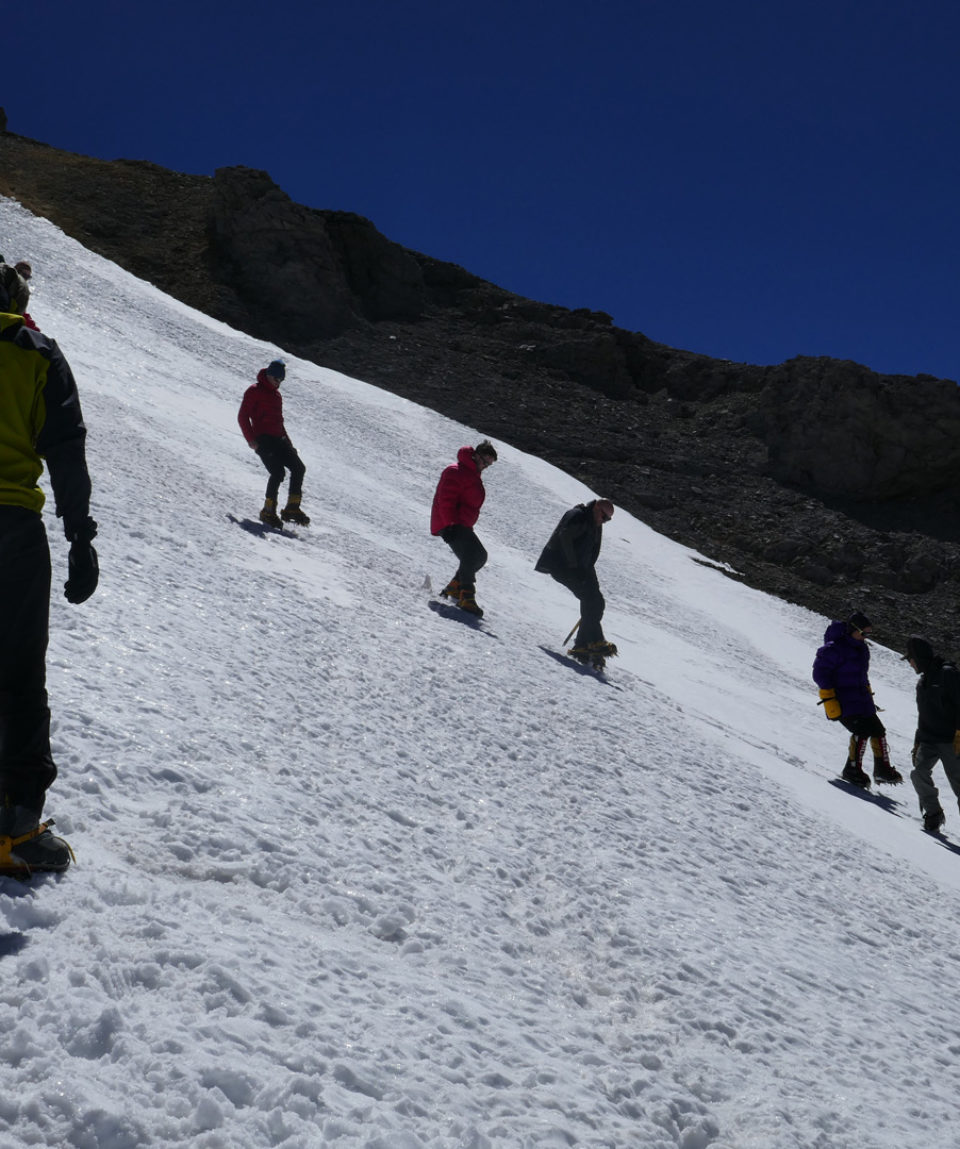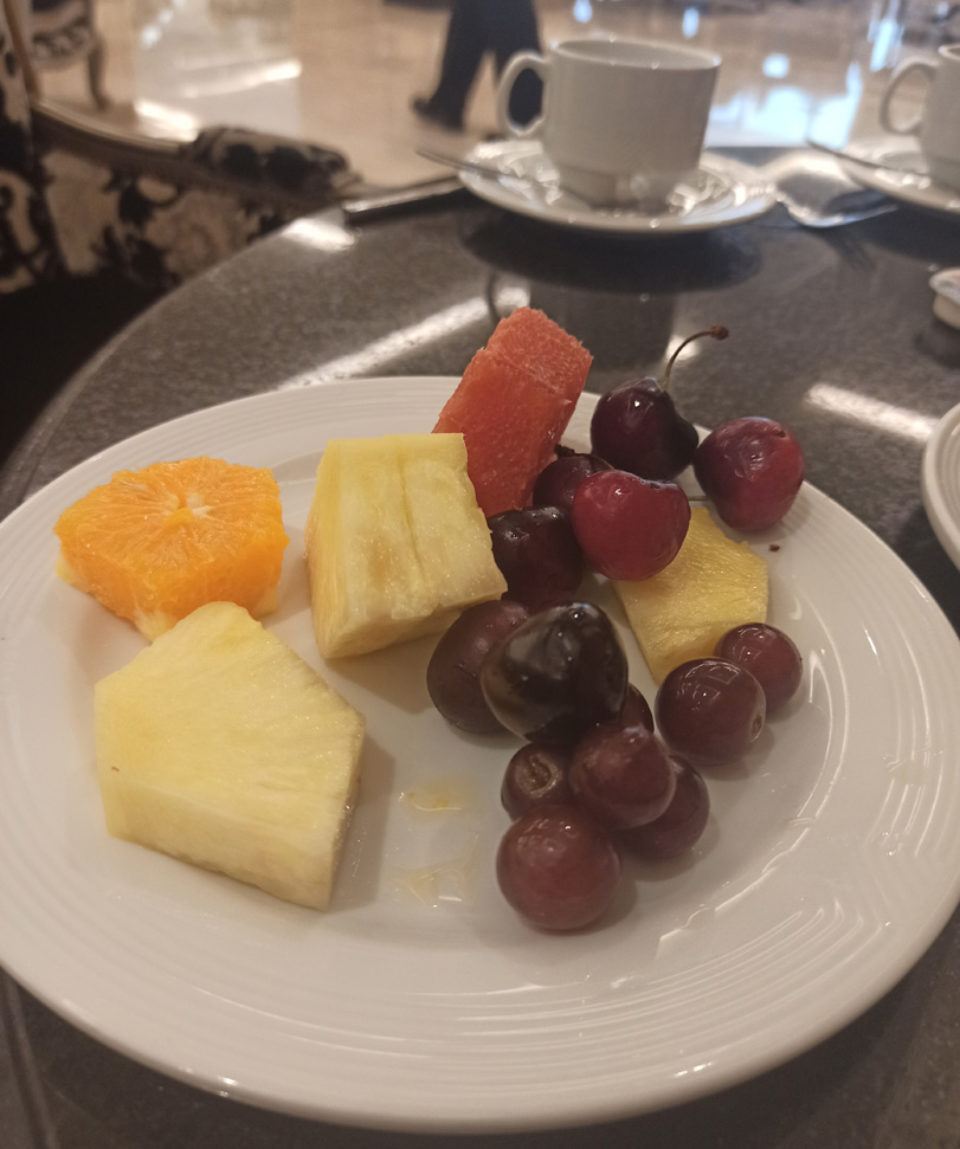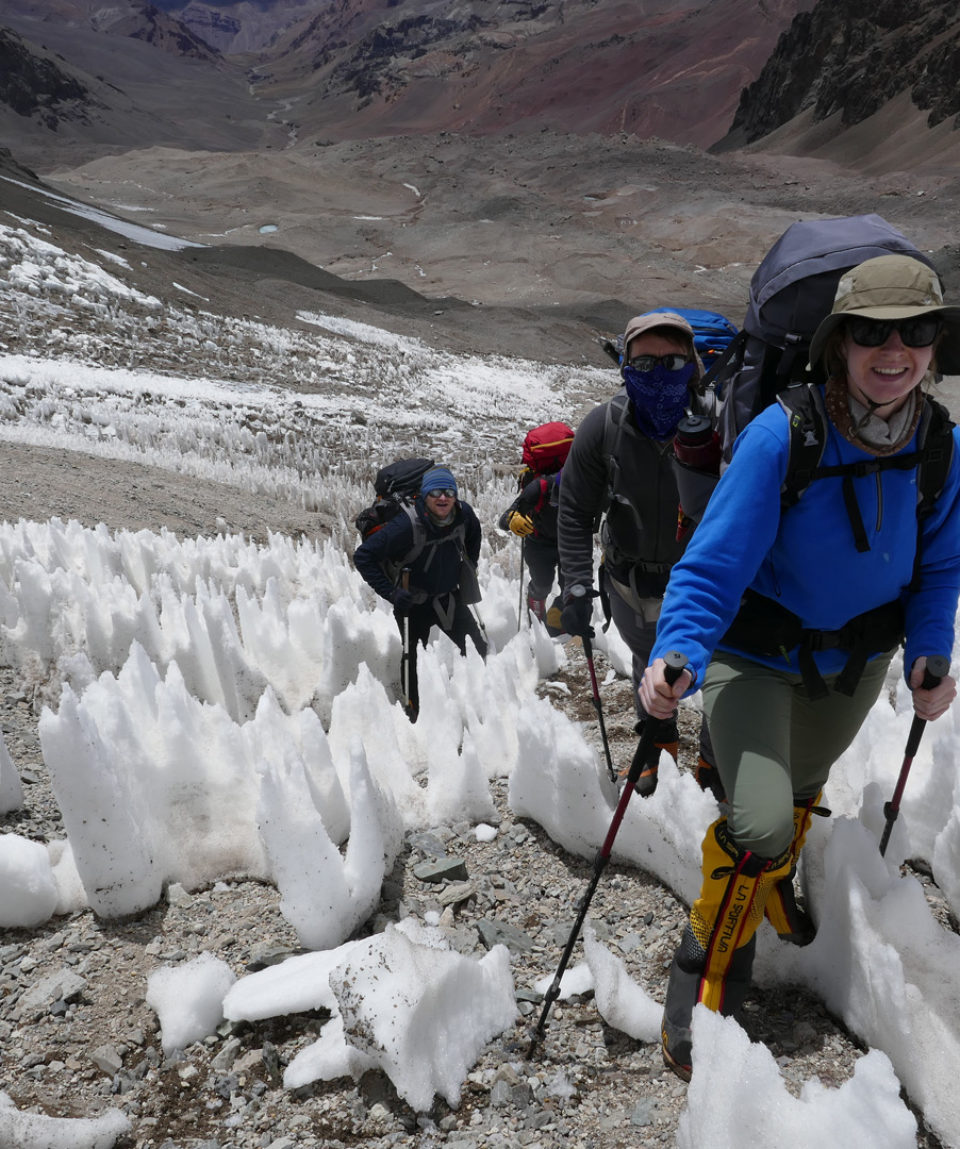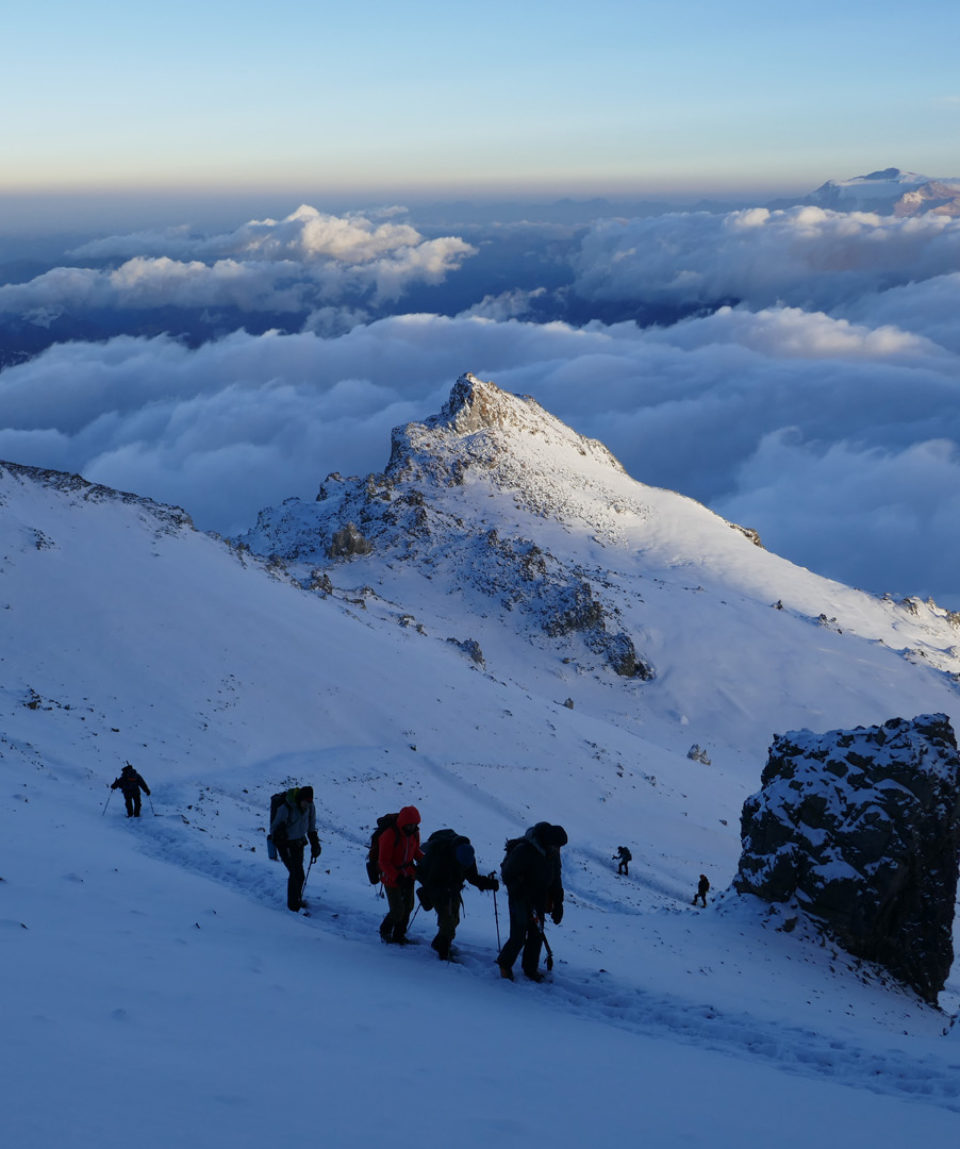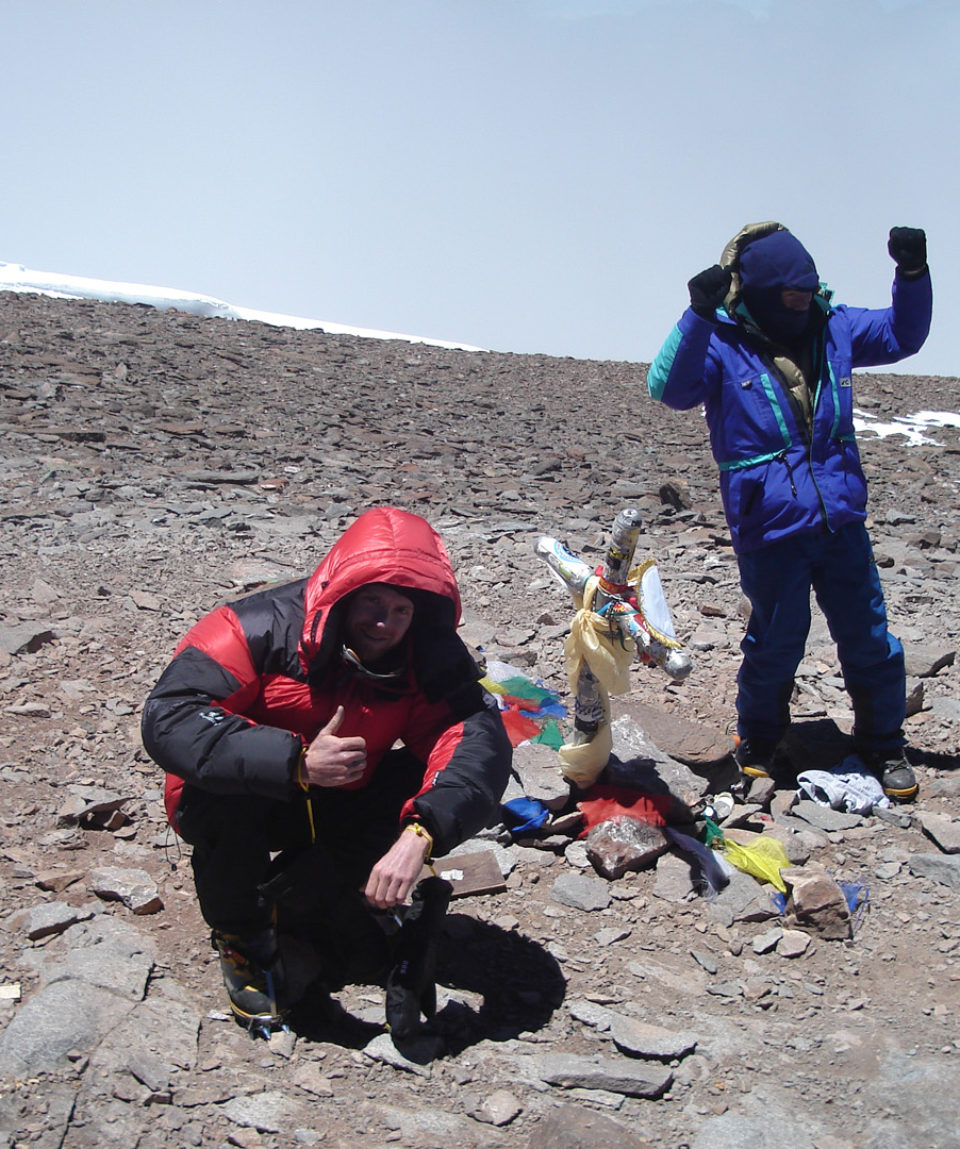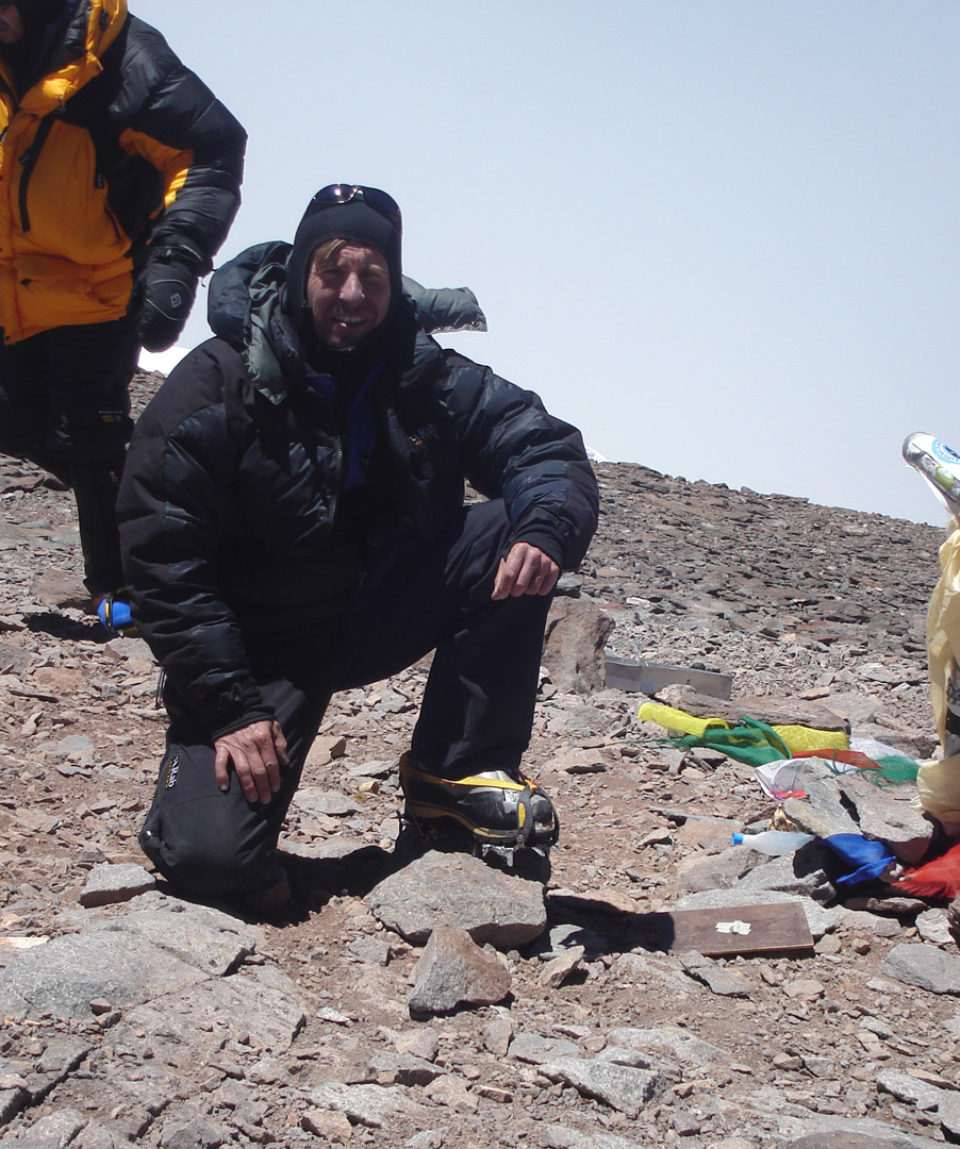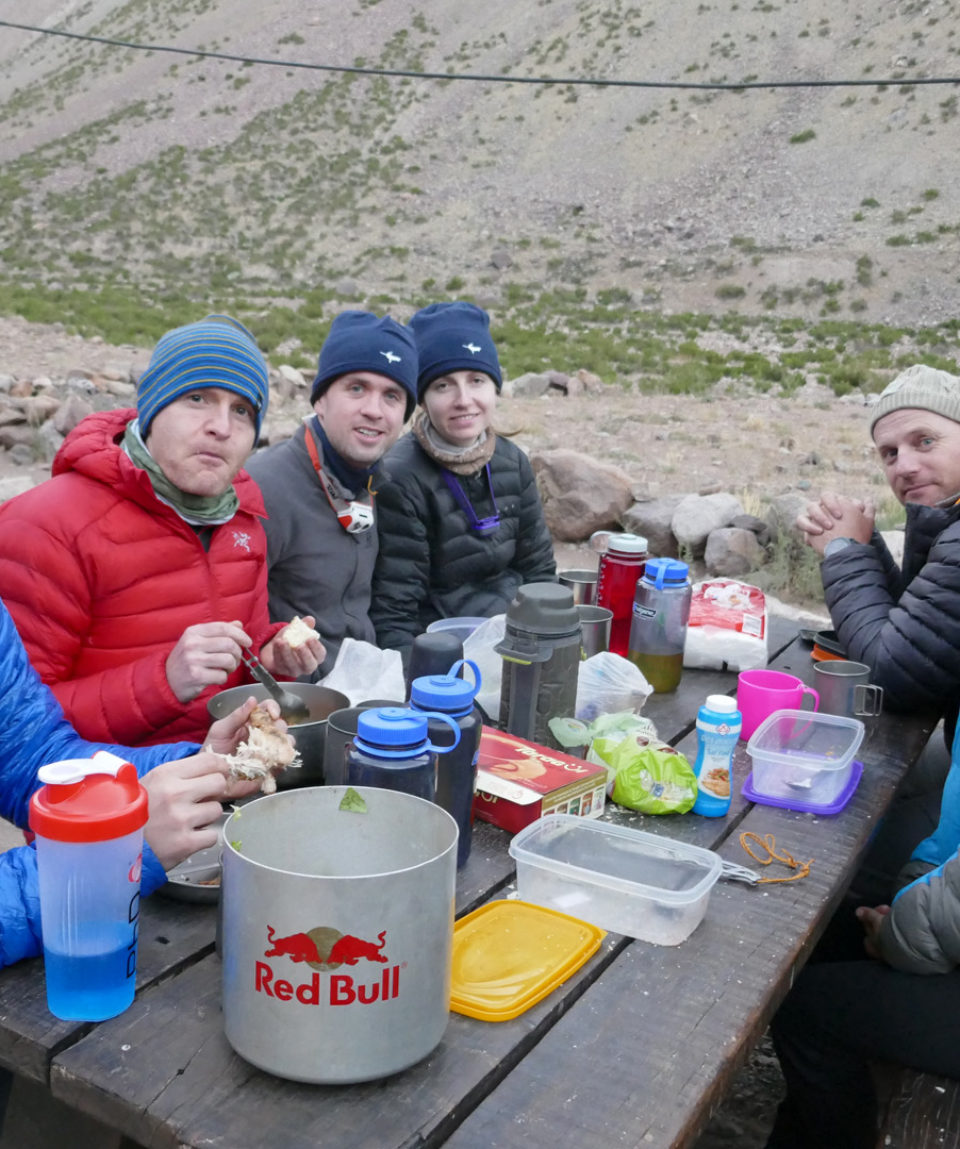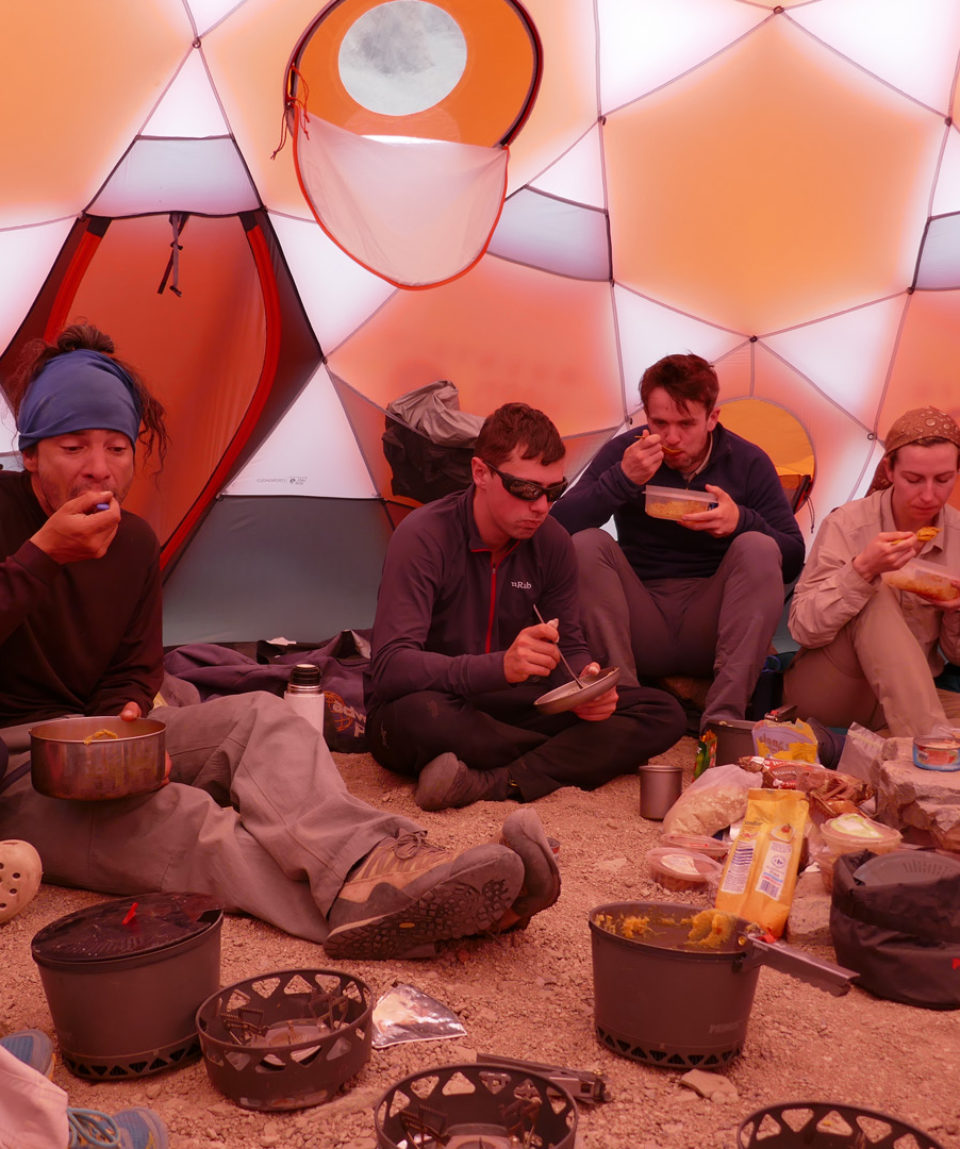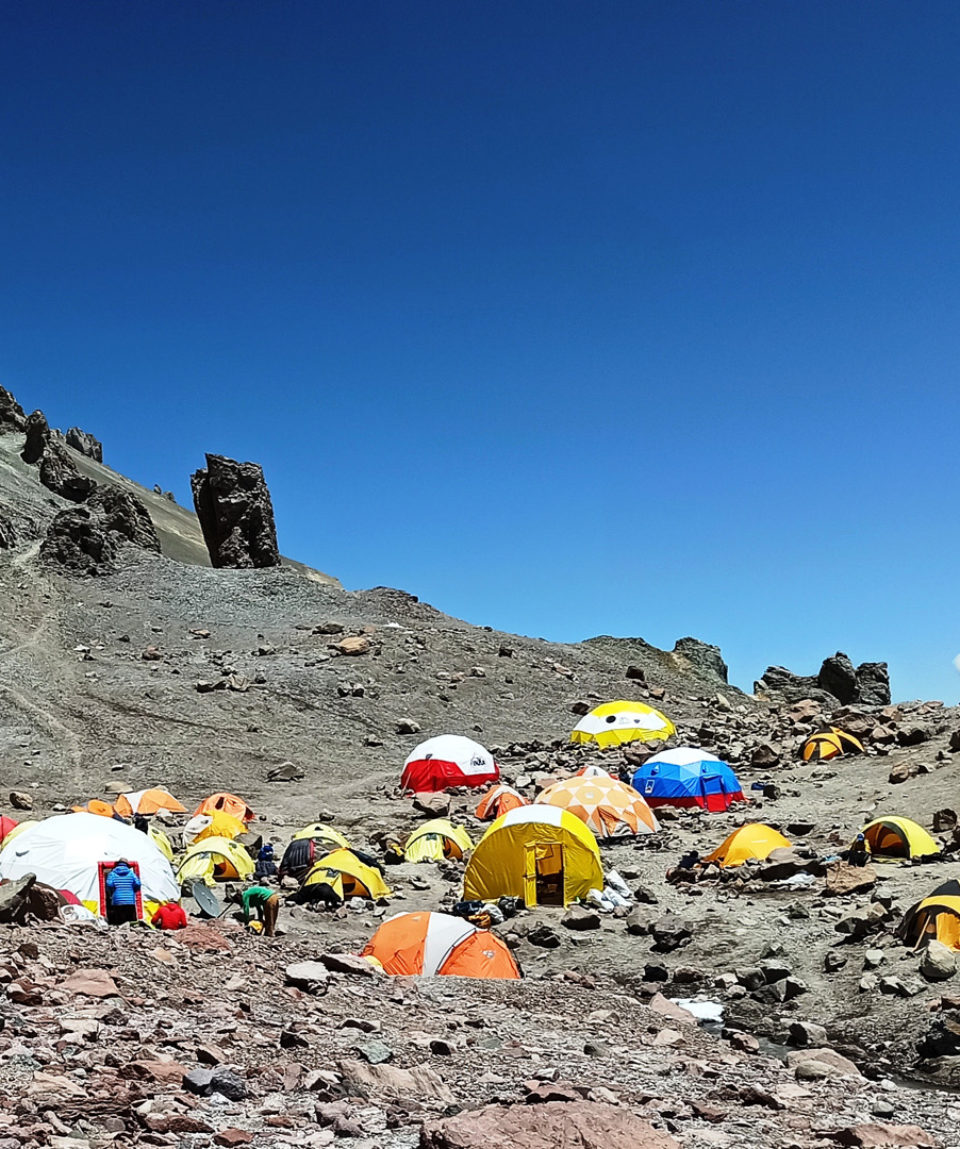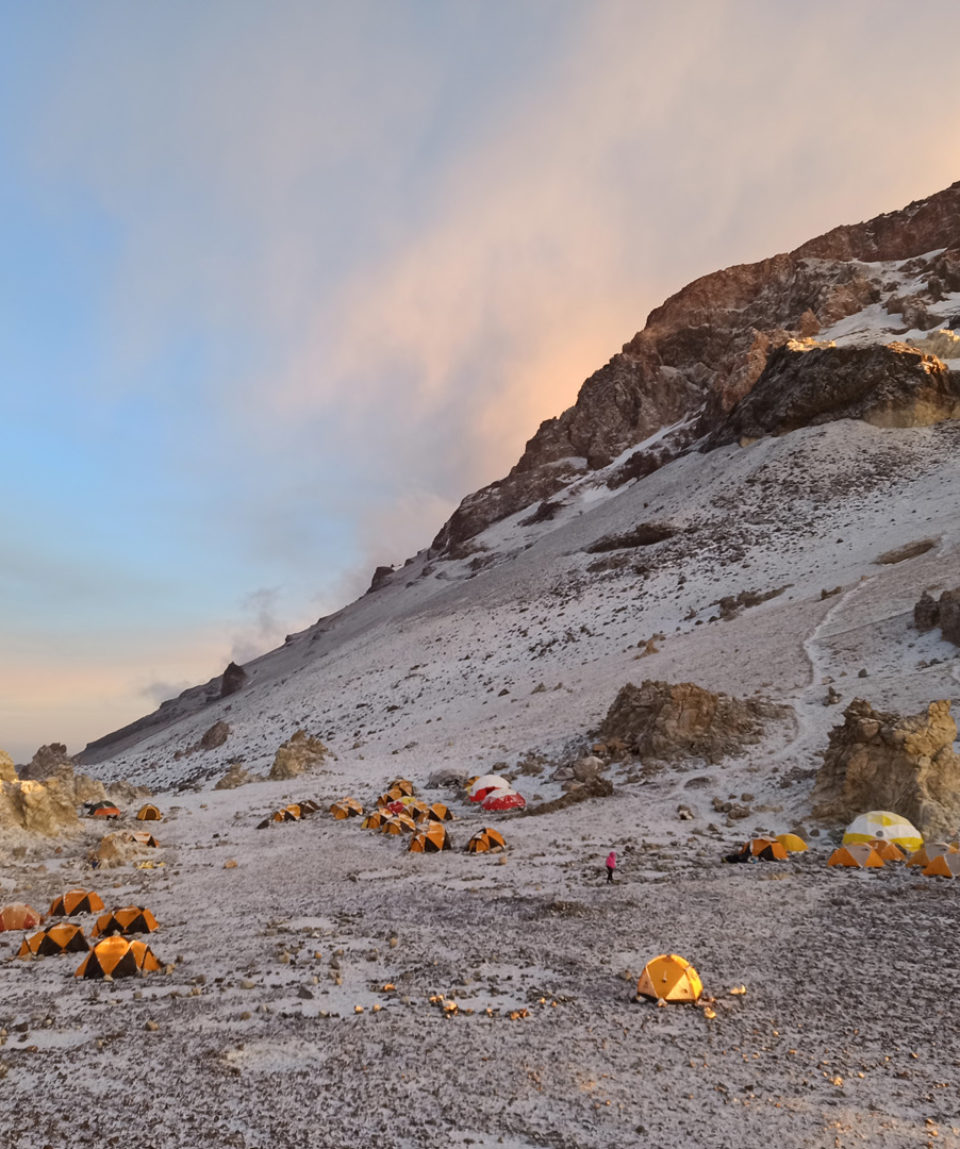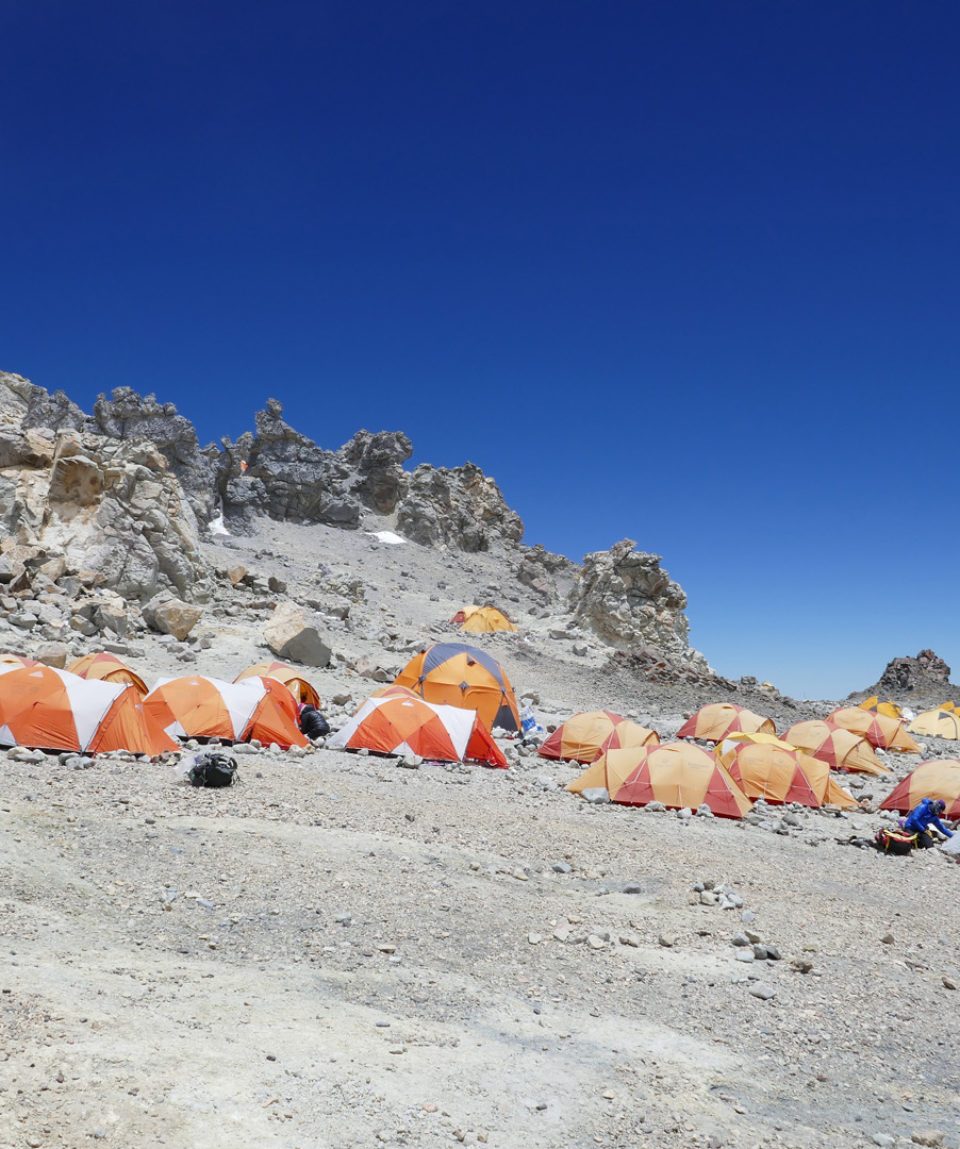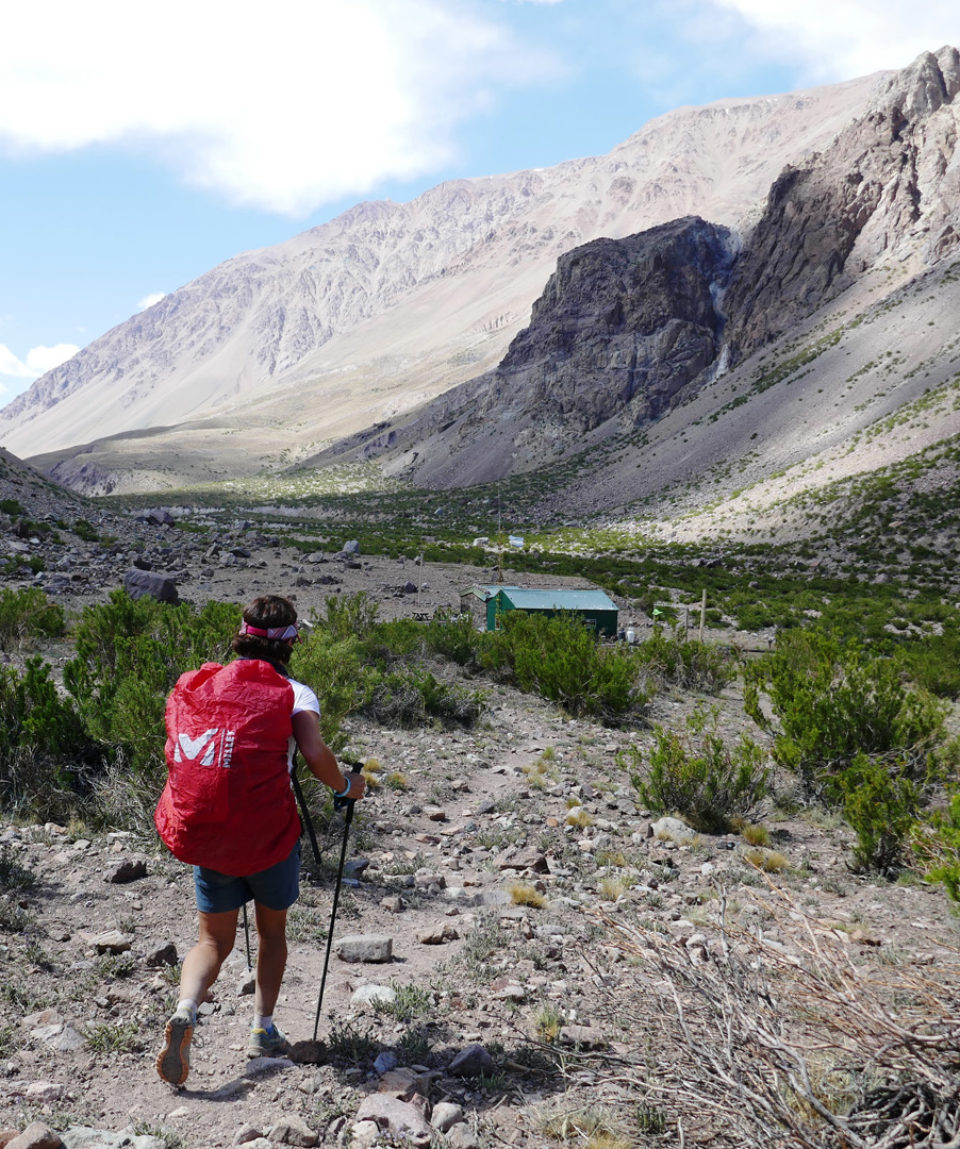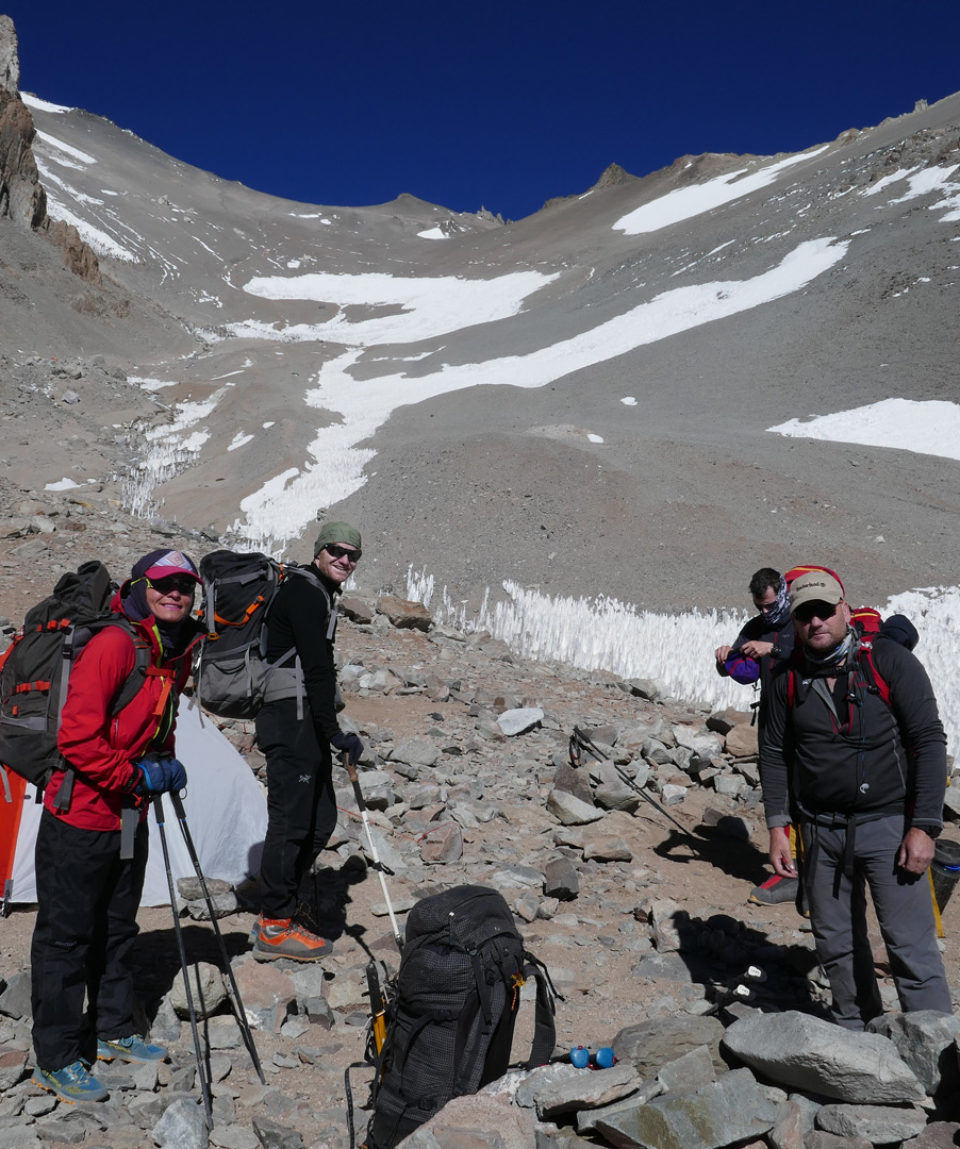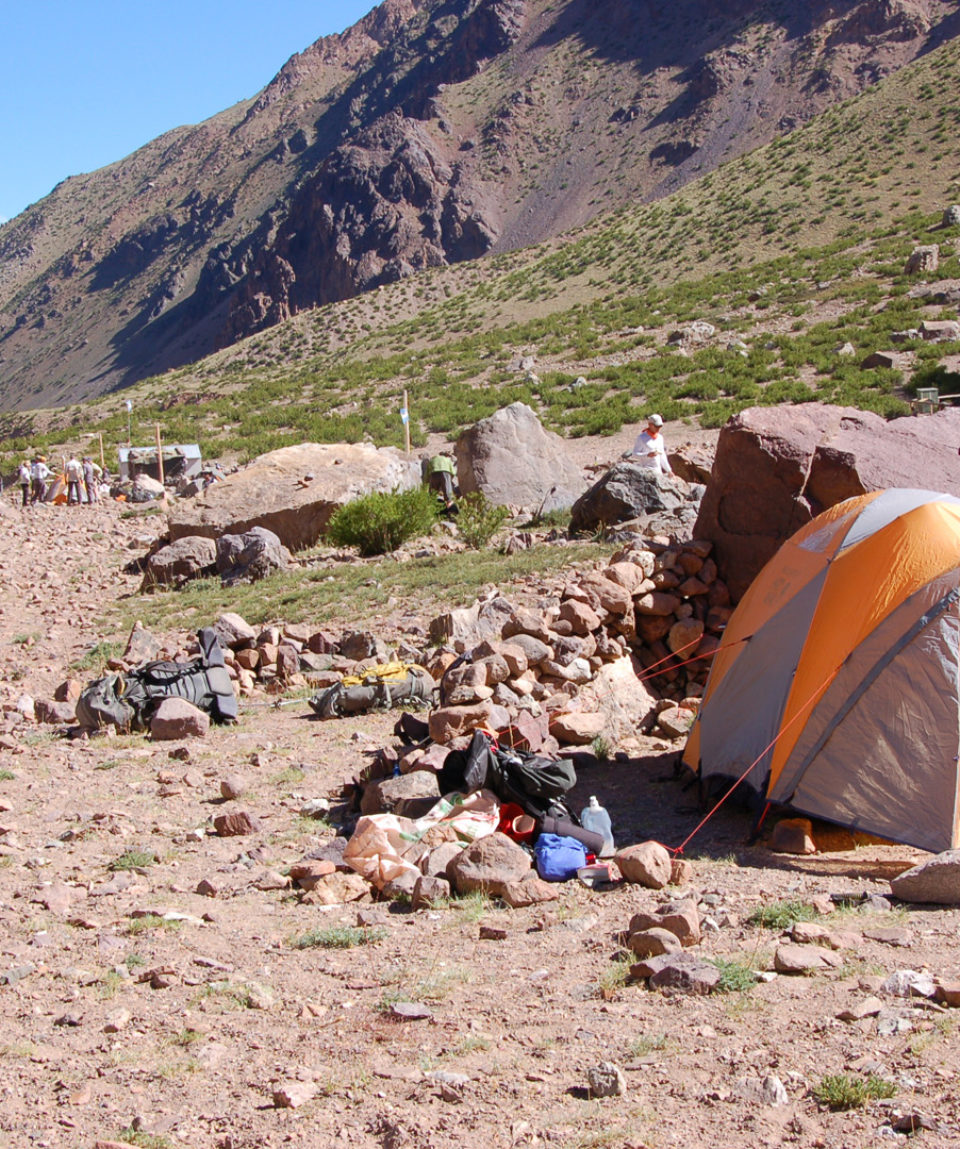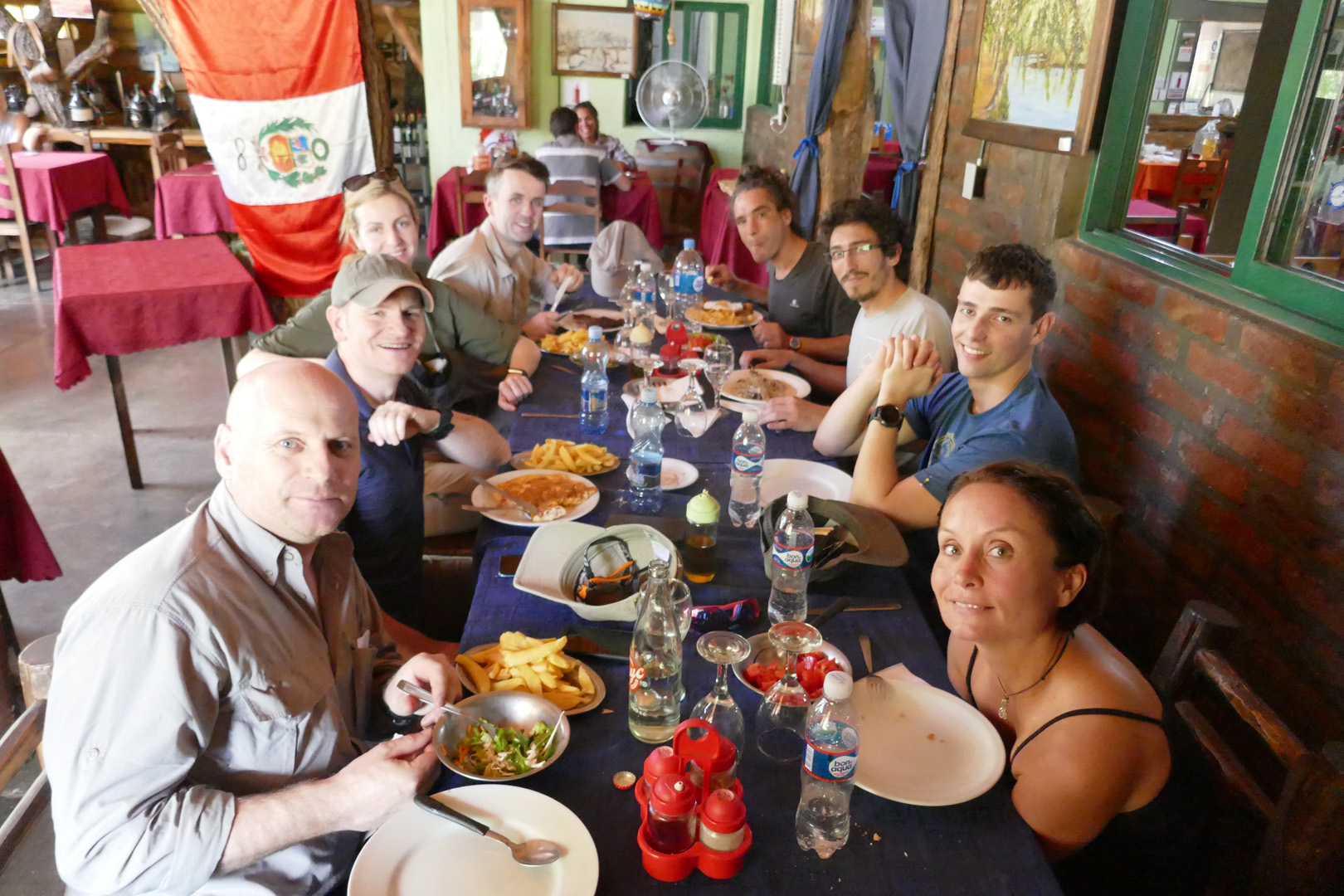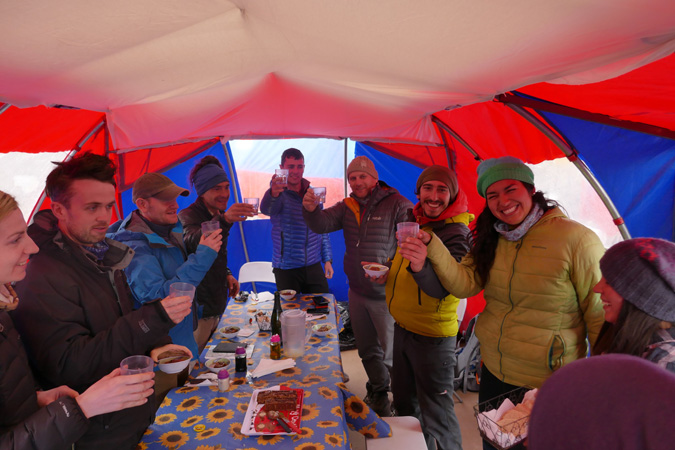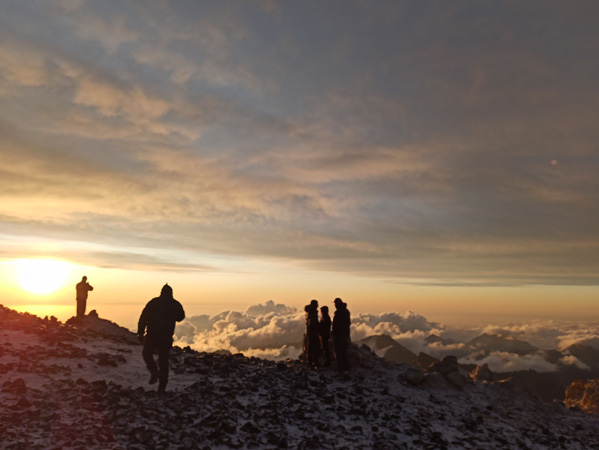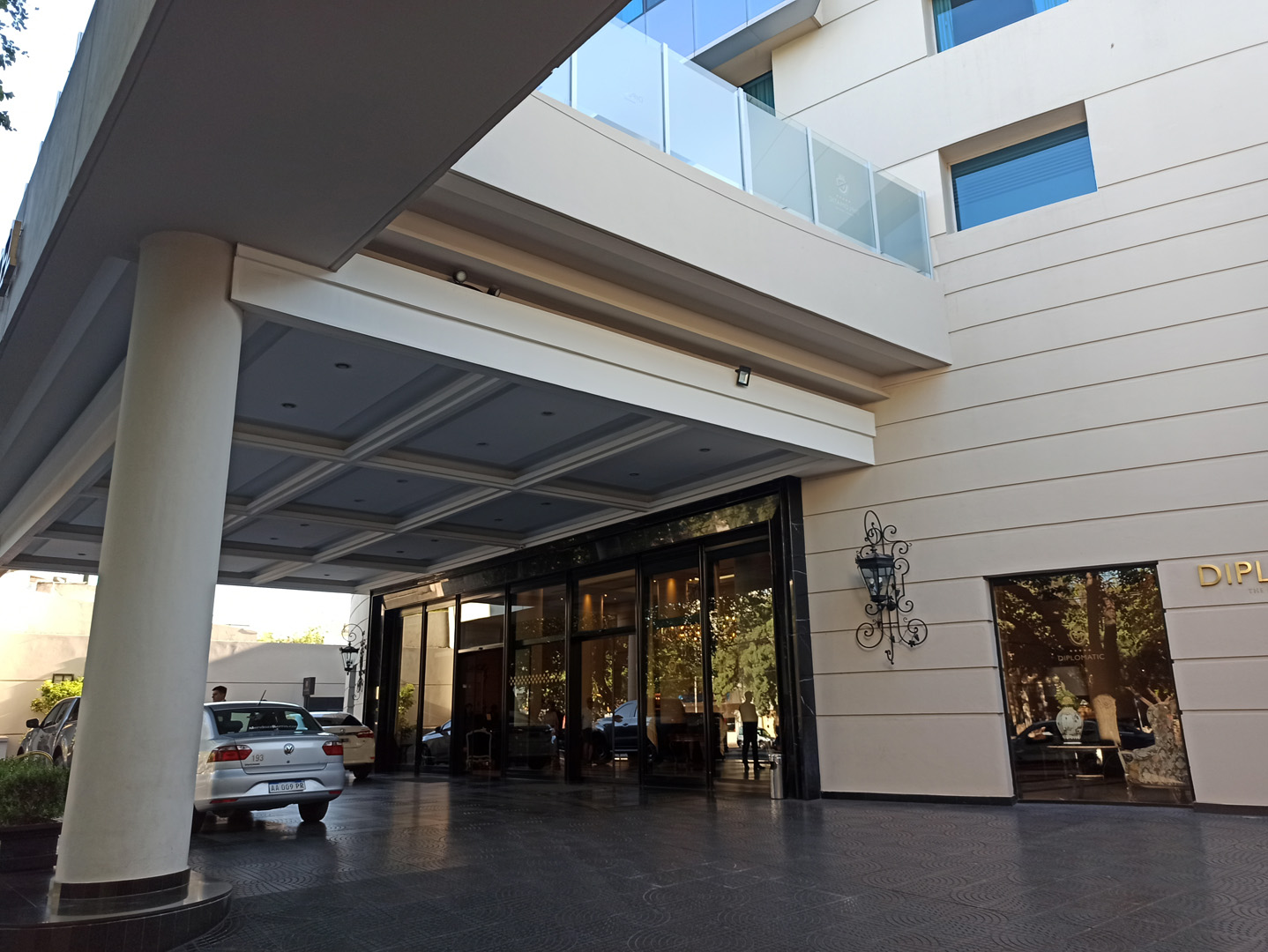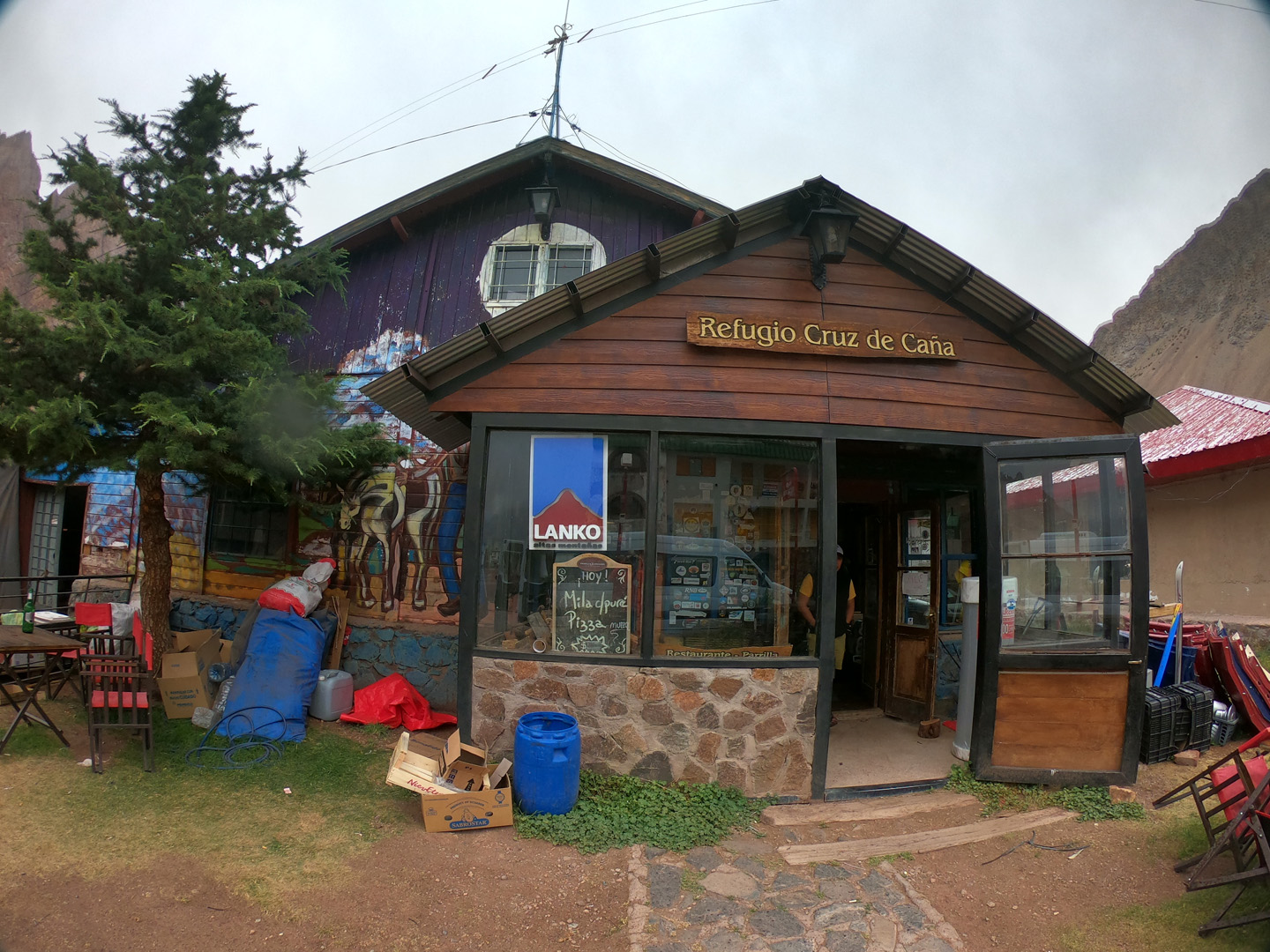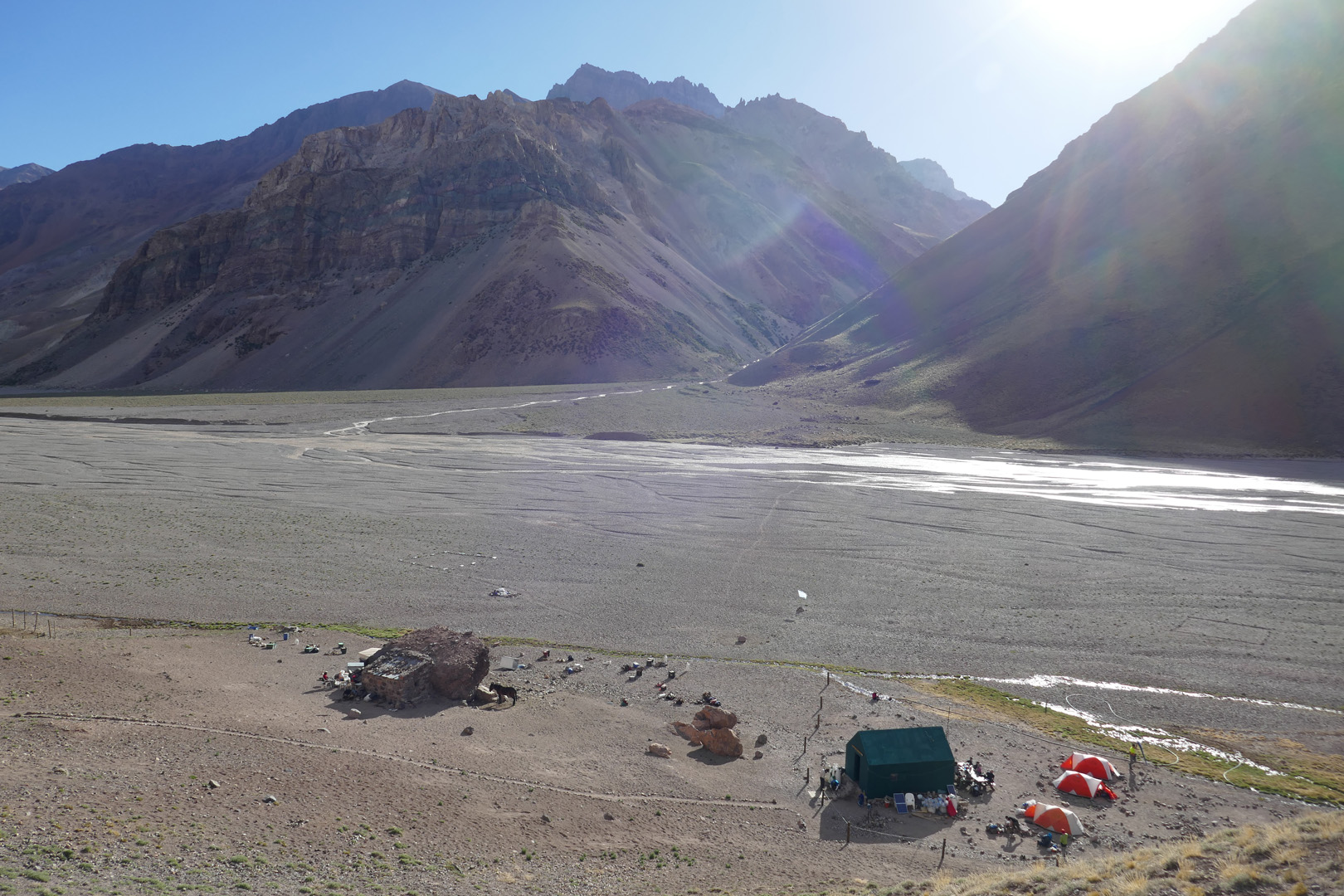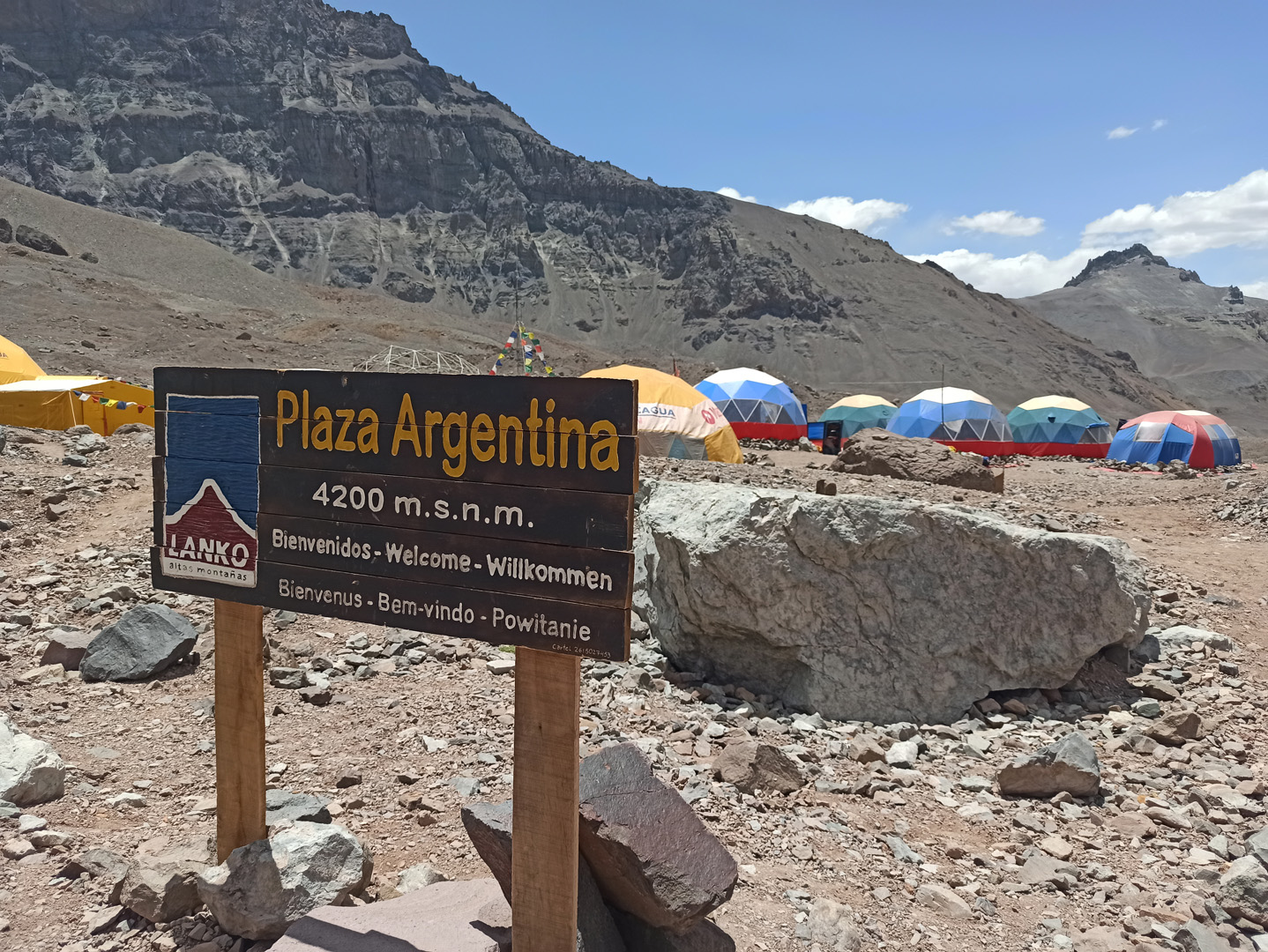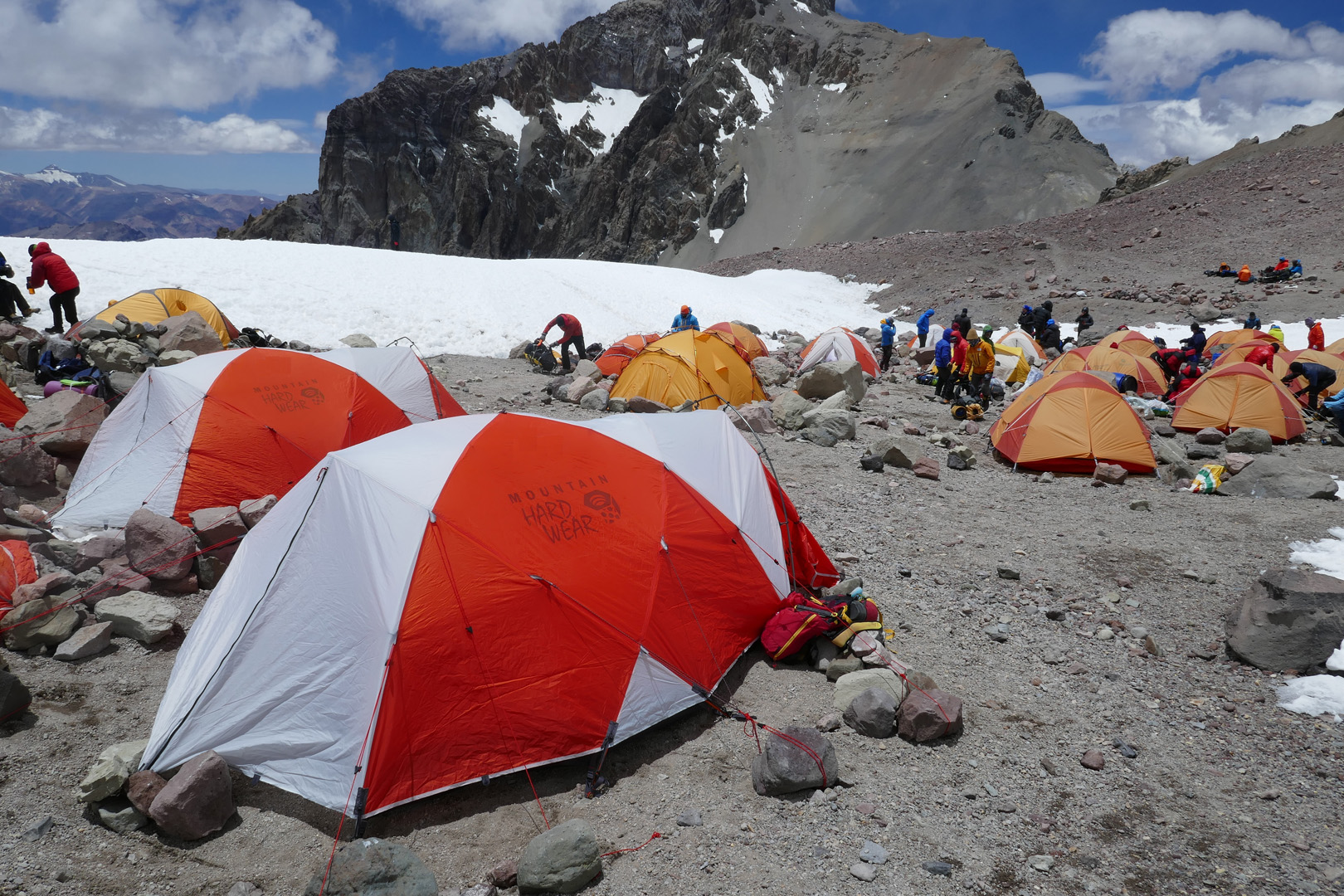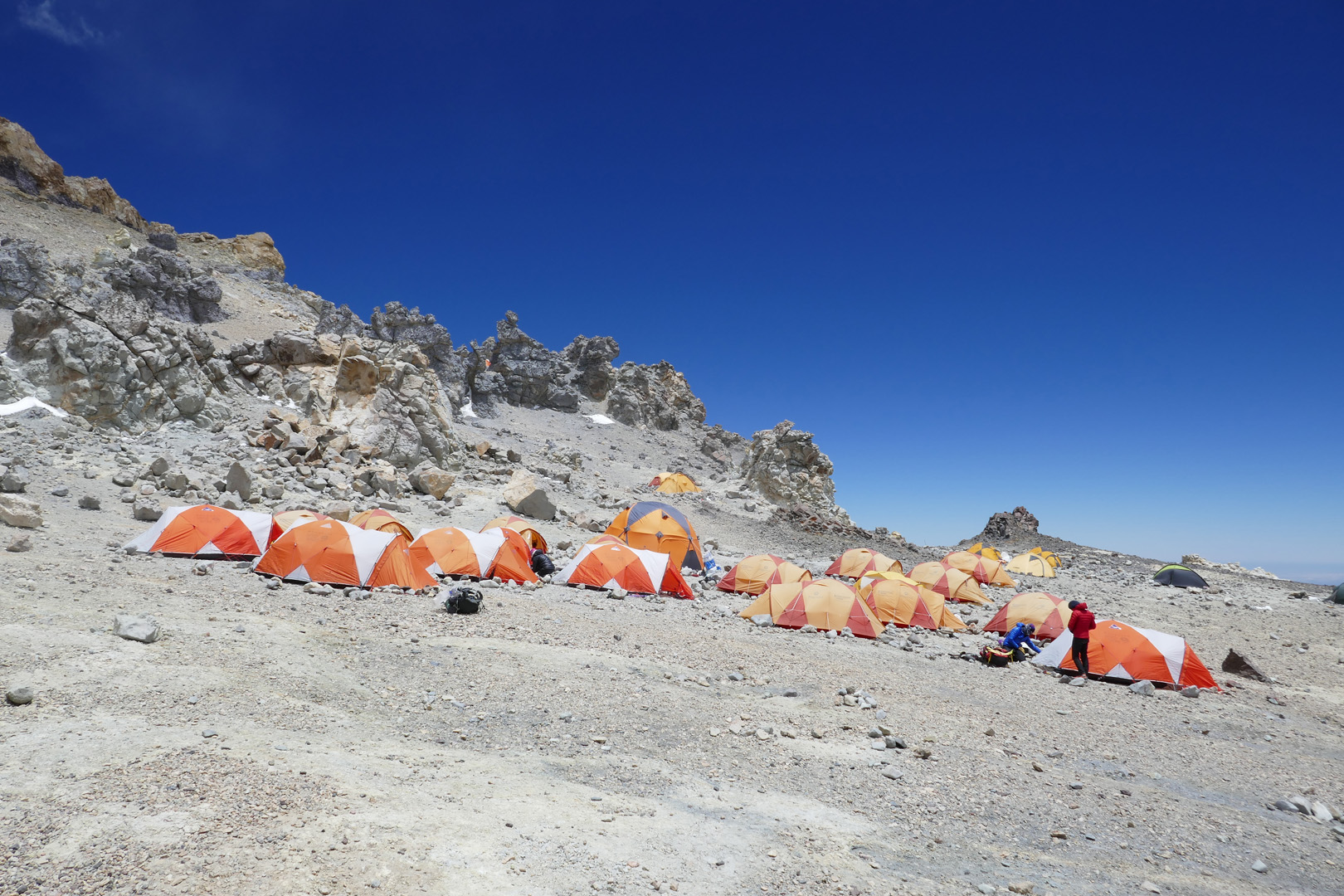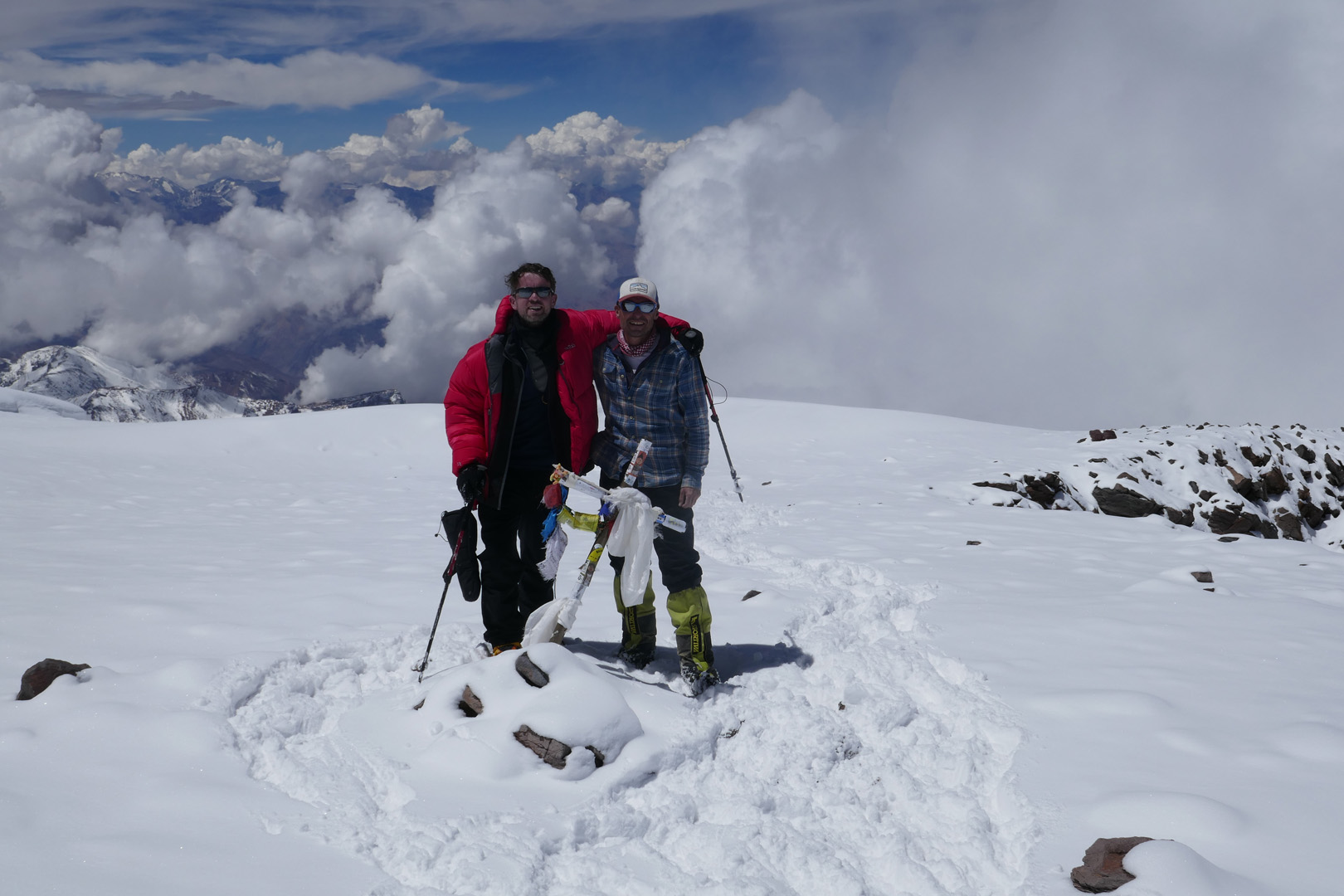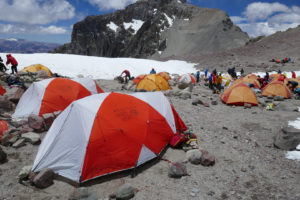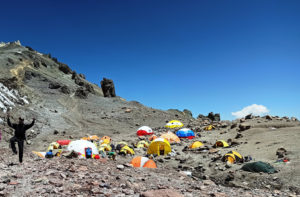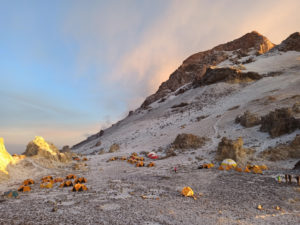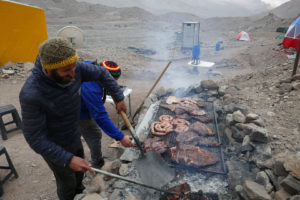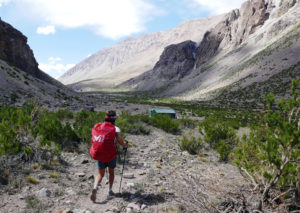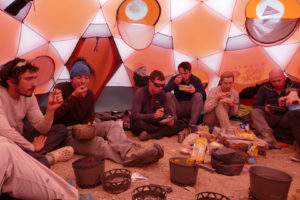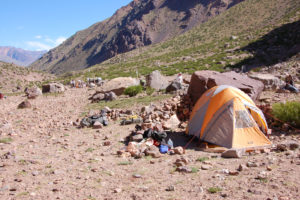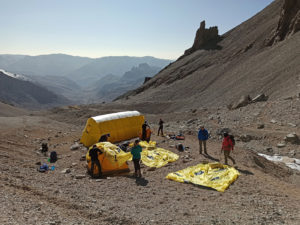Aconcagua 6962m – 19 days NOV I DEC I JAN
fromAconcagua is the highest mountain in the Americas standing at 6962m and the second highest of the 7 summits. For the Incas, the Aconcagua was a sacred mountain and places of worship were built here and sacrifices, including human sacrifices, were made. Interestingly it is also home to a mummy found in 1985, likely to be 14,300 years old. Wildly contorted and coloured rocks stretch out into vast glacial valleys. Fewer climbers on the mountain take the Polish Traverse route, and it has superior countryside, vistas, greenery, flora and fauna, with a longer walk which is better for acclimatisation.
This trip offers participants the chance to test their endurance at high altitude on a non-technical route in full expedition mode and offers excellent preparation training and altitude experience for those wishing to climb up to 8000 metres on Himalayan expeditions. To climb Aconcagua, you need to be physically fit, have strong mental stamina and be capable of strenuous exercise for several days’ duration.
Expedition members can expect exert themselves for about 6 hours per day and be capable of carrying a 15–20kg pack. Although it is a non-technical ascent, at just under 7,000 metres, it is a long and extremely tough climb at altitude. Although there are hundreds of mountains in the world which are higher than Aconcagua it must not be underestimated, for it can be bleak and unforgiving with merciless winds and biting temperatures. Well experienced mountaineers who have climbed many of the highest peaks in the Himalayas regard Aconcagua as being more of a challenge, due to its harsh conditions. Many who attempt to reach the summit of this peak are forced to turn back and descend.
POSTPONEMENT TO WINTER 2021/22
If a trip to Argentina is not possible, we offer the free postponement to winter 2021/22. There are no rebooking fees.
About the 7 Summits
The first 3 are the easiest and very achievable. With 3 under your belt, you will have gained skills and confidence and know whether you want to progress to the next stage. Each mountain is also a fantastic climb in itself and should be enjoyed.
We offer the first 3, Kilimanjaro, Elbrus and Aconcagua.
Kilimanjaro – December / January
Elbrus – August / September
Aconcagua – December / January
-
Reviews 0 Reviews0/5
-
Vacation Style Holiday Type
-
Activity Level Extreme or Exploratory - Trip grade 5
-
Group Size Small Group
- Private return shuttle from airport to Mendoza hotel
- 2 nights hotel double occupancy rooms with breakfast included
- Help in obtaining the necessary climbing permits
- Return transportation in private vehicles from hotel in Mendoza to Los Penitentes
- 1 night in Hotel Penitentes, double occupancy rooms, includes dinner (with one mineral water) and breakfast
- Transportation from Los Penitentes to Valle de las Vacas trail head
- Mules for the transport of equipment from Puente del Inca (Los Puquios) to Plaza Argentina and back, or from Plaza de Mulas to Puente del Inca (Traverse route). Limit of 30kg per person. We also transport personal equipment to the intermediate camps at Pampa de Leñas and Casa de Piedra.
- Food and drinks in Pampa de Leñas, 2 nights
- Food and drinks in Casa de Piedra, 1 night
- Food, drinks and base camp service in Plaza Argentina for up to 5 nights. Includes: private mess tent with tables and seats, all necessary dishes (knife, fork, spoon, plate and thermal glass), served meals, cook, equipment storage tent for use while group is at the higher camps, electric lights, permanent radio communication, toilet tent)
- We also cater for vegetarians upon request.
- Food, drinks and base camp service in Plaza de Mulas, 1 night in total; including private mess tent with tables and seats, all necessary dishes, served meals, cook, equipment storage tent for use while group is at the higher camps, electric lights, permanent radio communication, toilet tent
- Includes high quality four season tents (North Face, Mountain Hard Wear), stoves, cookware and dishes.
- All necessary food for the high-altitude camps
- Bilingual assistants and British guides
- Medical kits during expedition
- Radio for permanent communication between base camp, Mendoza and Puente del Inca to be able to co-ordinate different logistical issues, reservations, and when necessary rescues or evacuations
Not included
- International flights
- Provincial Park climbing permits (prices vary according to the season)
- Mendoza food and drink and lunch at Uspallata
- All alcoholic and soft drinks
- Personal porters
- Individual personal equipment for the ascent
- Extra costs as a result of abandoning of the expedition
- Medical or travel insurance
- Costs incurred as a result of an emergency rescue
- Personal expenses (drinks, laundry, mail, telephone calls and other items not mentioned above)
- All other services not listed as included
- Day 1 Day 1 Arrival in Mendoza
- Day 2 Day 2 Mendoza – Penitentes (2580m)
- Day 3 Day 3 Penitentes - Pampa de Leñas (2800 m)
- Day 4 DAY 4: Pampa de Leñas to Casa Piedra (3245m)
- Day 5 DAY 5: Casa de Piedra (3245m) -> Plaza Argentina Base Camp (4200 m)
- Day 6 DAY 6: PLAZA ARGENTINA BASE CAMP (4200 m)
- Day 7 DAY 7: PLAZA ARGENTINA to CAMP 1 (4,950m) to PLAZA ARGENTINA
- Day 8 Day 8: PLAZA ARGENTINA BASE CAMP (4200m) - Camp 1
- Day 9 - 11 DAY 9 - 11: Camp 1 (4950m) – GUANACOS CAMP (5700m) – Camp 1
- Day 12-13 Day 12-13 Move to GUANACOS Camp (5,700m). Rest or contingencies day at GUANACOS CAMP
- Day14 DAY 14 – GUANACOS CAMP to CAMP 3 CÓLERA (6000m)
- Day15 DAY 15: CAMP 3 to SUMMIT (6,962m) to CAMP 3
- Day17 DAY 17: CAMP 3 to PLAZA DE MULAS (4,260m)
- Day18 DAY 18: PLAZA DE MULAS - HORCONES - MENDOZA
- Day19 DAY 19: MENDOZA
Hotel in Mendoza
You will be allocated a 4* hotel according to availability that your guide has used before and knows to be excellent. The region around Greater Mendoza is the largest wine-producing area in Latin America. As such, Mendoza is one of the nine Great Wine Capitals, and the city is an emerging ecotourism destination and base for exploring the region’s hundreds of wineries located along the Argentina Wine Route.
GUIDES
Sean James
Sean is based in the French Pyrenees, Font Romeu and Dubai and spends most of the year working as a mountain guide in the Himalaya, Andes, Asia, Africa.
He has led over 14 8000m expeditions and summitted many other trekking and lower peaks including 3 times leading successful groups to the summit of Everest. I have also climbed Manaslu and Gasherbrum II without oxygen. Aconcagua is one of his favourite trips.
This is currently approximately US$950. Permit fees are payable in Argentinian pesos at the
National Park Service office in Mendoza prior to departing for Penitentes. Permit fees are subject to change and the peso equivalent varies depending on the official exchange rate on the day.
Generally, entry visas are not required for travellers to Argentina staying less than three months but please check with your travel agent for details
according to your nationality. Trekking and climbing permits are a separate
matter dealt with by the expedition agent.
Our guides prepare food during the trek in and whilst on the mountain. At Base Camp, food is provided by the well trained Argentine cooks at Plaza Argentina and Plaza de Mulas. Please indicate any specific dietary requirements you may have on
your application form. For special diets such as vegan, gluten or dairy free,
we will call you to discuss your needs and how this will work in the group cooking situation. We advise you to bring supplementary snacks for during the expeditions especially for special diets such as vegan, gluten or dairy free.
To give yourself the best shot at summiting Aconcagua we recommend being in the best physical shape that you can possibly be with excellent aerobic fitness level. If you live in an area that is blessed with mountainous terrain, then the best training you can do is to take frequent hiking excursions. We suggest 3-5 months of training before taking on Aconcagua and boosting your experience on rocky mountainous terrain. Your training regime should consist of aerobic activities like running, spinning or spending time on the rowing machine. You should couple aerobic exercises with weight training to strengthen your legs and core. On paying your deposit we can send you training guidelines that can be personalised to you.
High season on Aconcagua is from 1 December to 20 February with the best weather being mid December until the end of January. Most ascents are made at this time and there is a 50-70% summit success rate on the mountain generally. Any lack of success may be due to particularly poor weather or altitude issues.
On the Aconcagua, our mountain guides and ranger doctors regularly check the health of the participants and only with appropriate fitness and adaptation (sufficient oxygen saturation) can you climb higher. The summit day walk is strenuous, we breathe faster and the heart rate is increased. The body can acclimatize well up to 5000 meters, but we need to listen to our bodies.
At night, temperatures as low as -20 ° C are to be expected in the last camp, and temperatures as low as -25 ° C await us when we set out early. The wind chill factor, especially during a strong storm, and the extreme altitude (lack of oxygen) can mean that the perceived temperatures are even lower. In such cases, going to the summit may be impossible. The first priority of our professional mountain guides is safety.
From the basic price for experienced mountaineers to full service participation (with 1 mountain guide per 3-4 guests, possibly with 1: 1 mountain guide if desired), we offer a lot of flexibility to reach the summit together as a team.
Requirements are very good physical condition and stamina, physical robustness, good health, team spirit and independent hiking on the mountain. Experience in altitude above 5000m * is helpful and recommended.
Technical requirements: The normal route over the northwest flank has no technical difficulties, so that no experience in rock or ice climbing is required. Depending on the current state of the route, crampons and ropes may be used for securing. Such decisions are made by the mountain guides on site.
Physical requirements: On the technically easy normal route (northwest flank), in addition to the inevitable good physical condition, psychological strength and a strong will is required. The biggest challenge on this expedition is the effects of altitude on the body. Our program is structured in such a way that we attach great importance to the correct acclimatization and altitude tactics, and employ a very experienced high-altitude mountaineer as a tour guide.



